A report on clam digging - everything from what to wear & bring to tips on how to catch them!
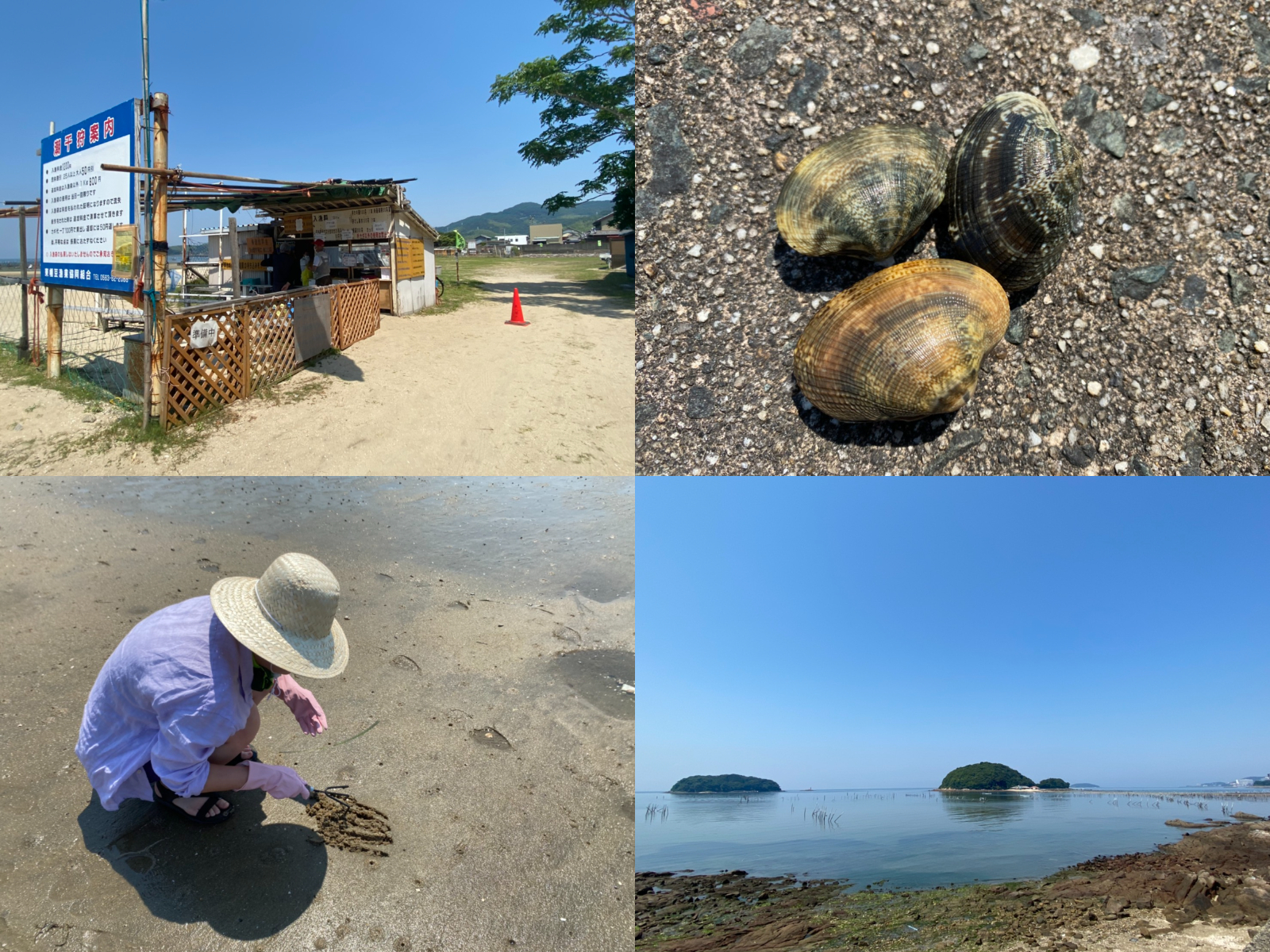
Table of Contents
* Information is current at the time of the interview.
Please check the latest information of each facility and store when using.
hello everyone!
These days, it's getting closer to summer. The other day, Life Designs Editorial Team went clam digging at the Higashihazu Beach in Nishio City, Aichi Prefecture.
Clam digging, which is held from spring to early summer, is perfect for outdoor leisure in the coming season!
Must-see for beginners! What to bring for clam digging?
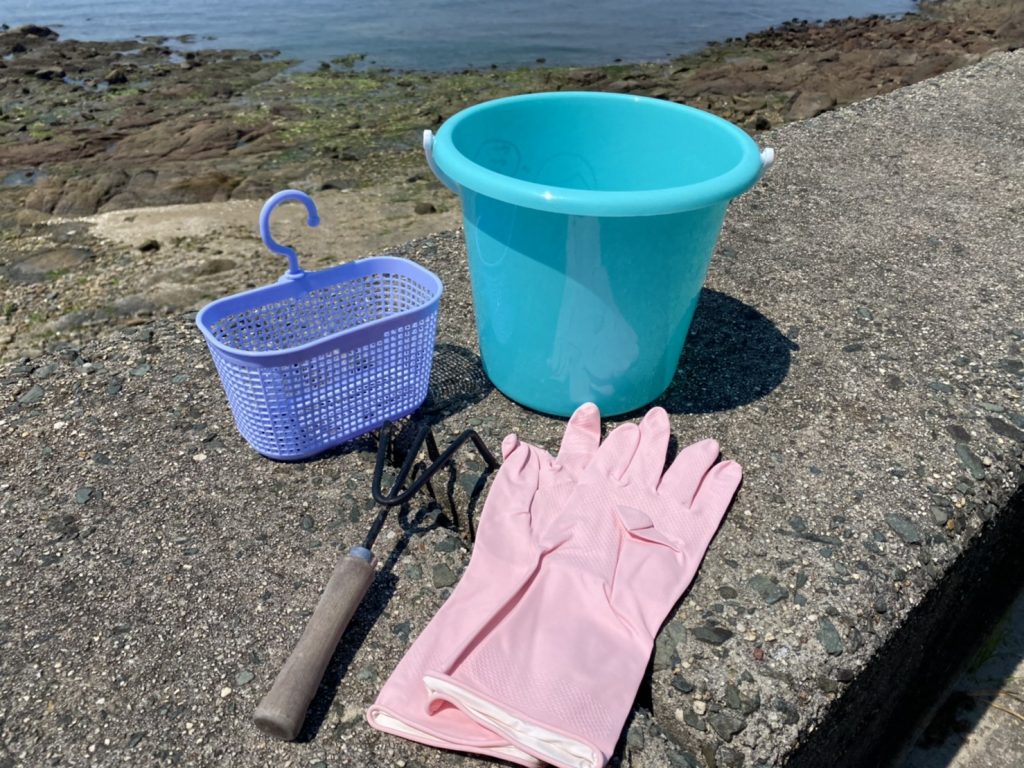
First, let's take a look at what you need to bring for clam digging!
[List of belongings for clam digging]
・Rakes (may be rented for a fee)
・Bucket
・Sandals (marine shoes or sandals with a belt, short rain boots)
・Change of clothes ( top and bottoms)
・Hat to prevent heatstroke
・ Rash guard
・Sunscreen
・PET bottle (for seawater used for removing sand)
・Cooler
・Work gloves (rubber gloves are convenient)
・Picnic sheet
・Basket (or colander)
Clothing suitable for clamming
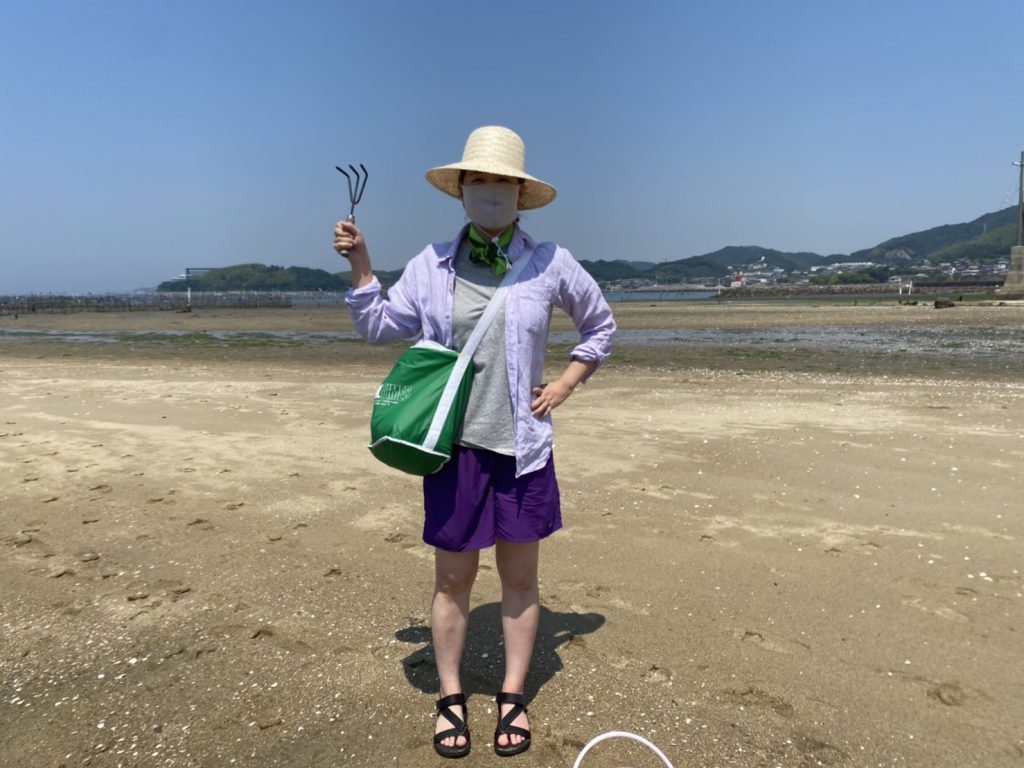
<Don't forget sun protection>
The sunny sandy beach has nothing to block the sun. A hat for sun protection is a must! If possible, choose one with a string so you don't have to worry about it being blown away by the wind.It can get cold due to the temperature and the strength of the wind, and it can get wet and cold, so bring long sleeves and a jumper! It will also protect against sunburn. Long pants are recommended for those who are concerned about sunburn.
<Tips for choosing shoes>
To prevent unexpected injury, avoid wearing flip-flops or other shoes that show bare feet. Boots or marine shoes are recommended. Plastic and glass fragments may fall on the beach. Clam shells can also damage the soles of your feet. Therefore, choose shoes that can hold your feet firmly in place.<A change of clothes is essential>
A change of clothes after getting wet is essential. Bring an extra towel for peace of mind.<Rubber gloves are useful>
Military gloves are fine, but I personally recommend rubber gloves because they keep water out. If you put your bare hands in the sandy beach mud, you may injure your hands by broken shells or underwater creatures.<A basket is recommended>
A basket is useful for sorting shellfish. You can put the whole sand dug up with a rake into the basket and shake it with the basket to remove the sand and make the process more efficient.
What do you do with the shellfish you collect?
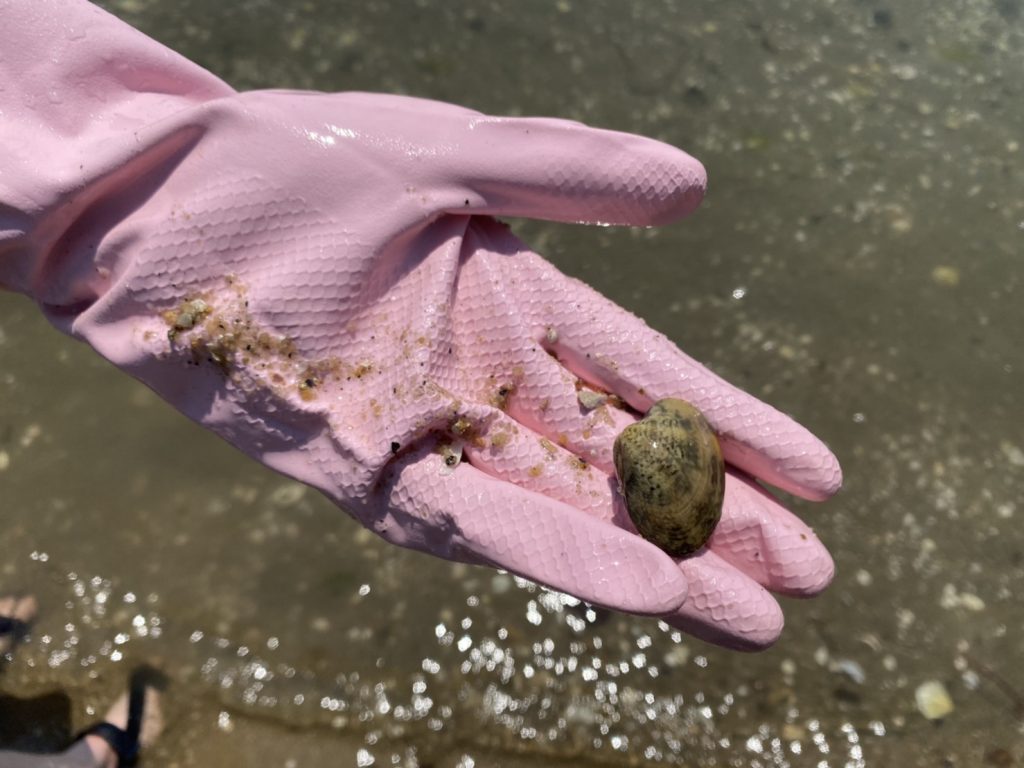
If you soak it in sea water for about 3 hours after picking it, the sand will be removed! After rubbing the shells together and washing them with fresh water, you can use them in a variety of dishes.
Therefore, it is convenient to prepare a cooler. If you put shellfish and seawater directly into the bowl and put a net on the bottom, the sand spit out by shellfish will accumulate at the bottom. Also, clams are sensitive to heat, so be sure to add ice packs as well.
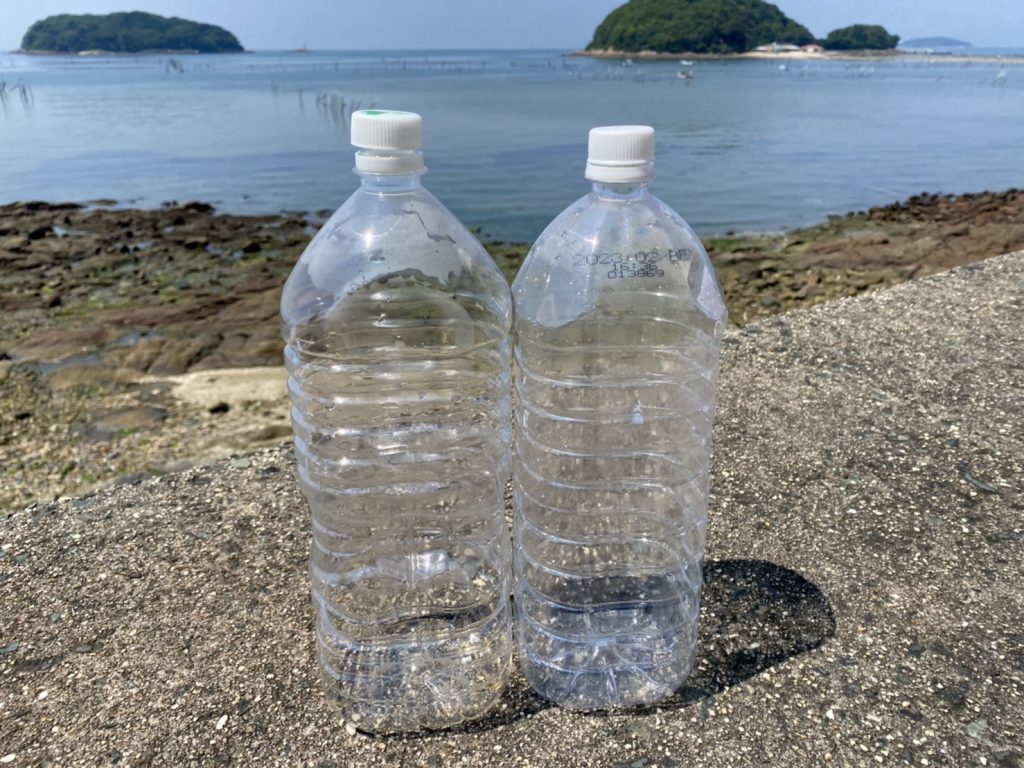
If you fill a plastic bottle with tap water and bring it with you, you can wash off the dirt from your hands and feet after clamming. If you fill a bottle with clean seawater and bring it back home, you can use it to remove sand from the clams you took home.
What are the season and hours of clam digging?
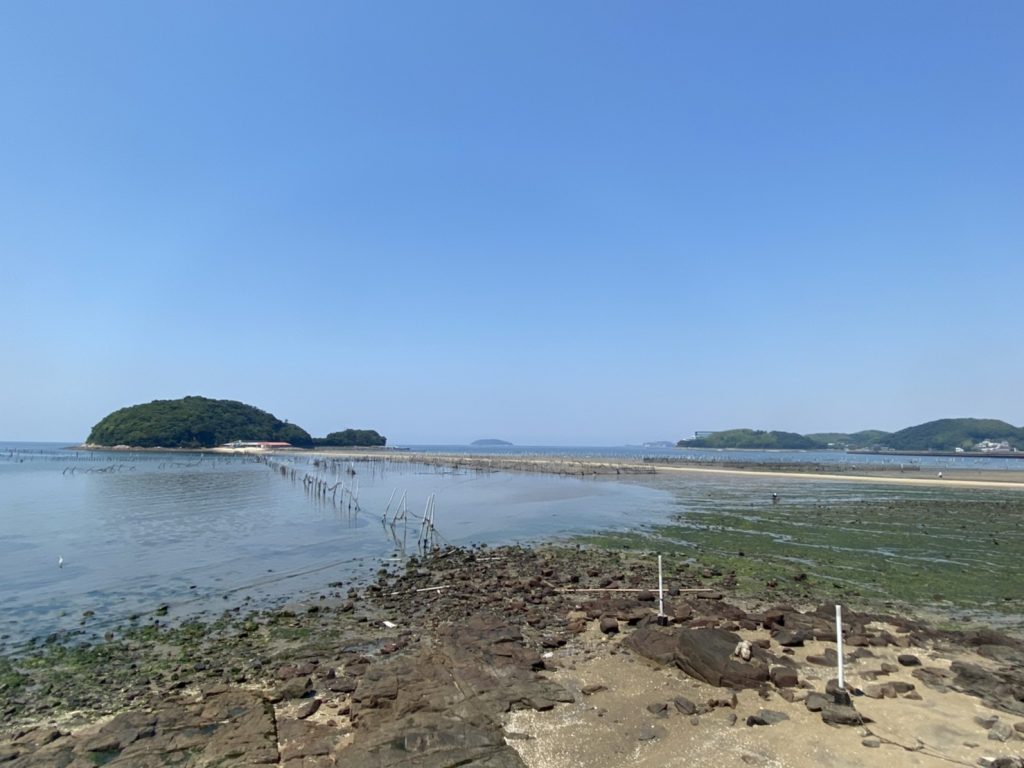
Clam digging begins as early as March in some places. Some spots are open year-round, so be sure to check the official website before you go.
The best timing for clam digging is from about 2 hours before low tide until low tide. Check the tide table to confirm the time. It is efficient to dig along the beach while following the ebb of the tide, ending at the end of the tide.
Let's try clam digging!
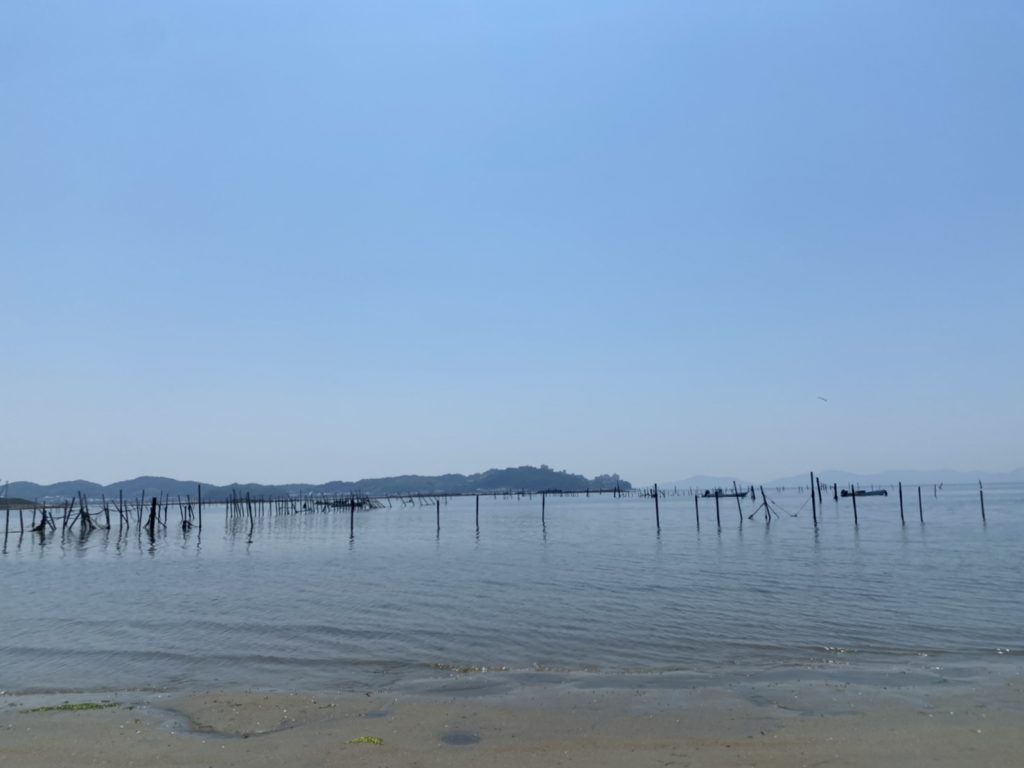
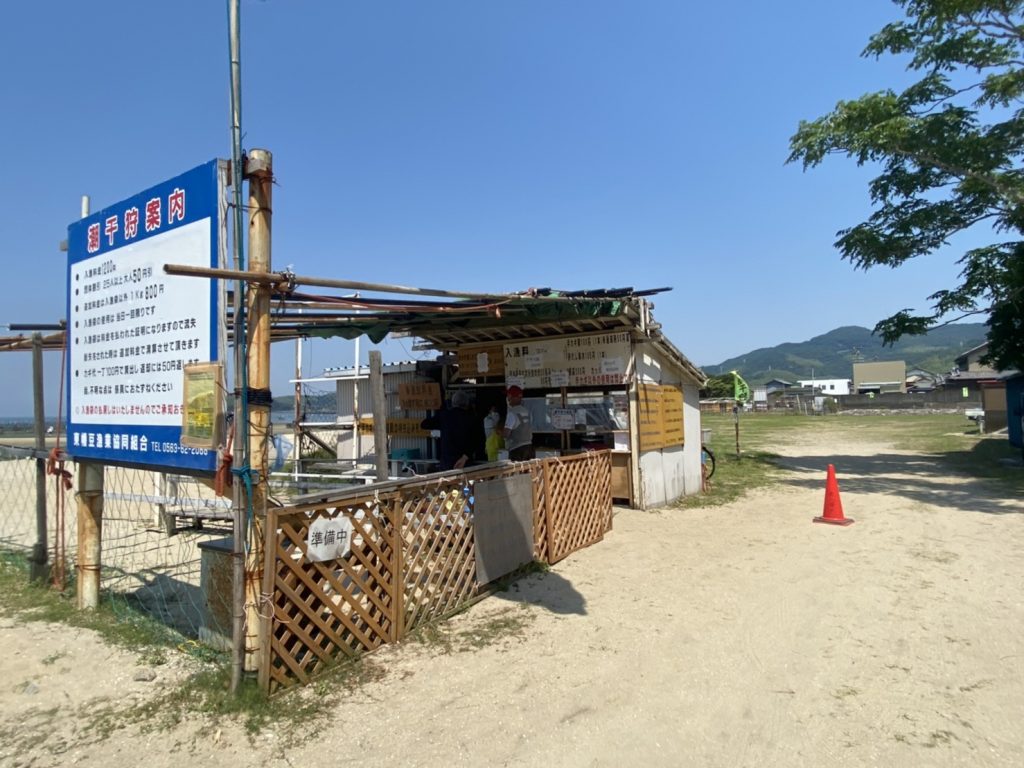
This time, we chose “Higashihazu Beach” in Nishio City, Aichi Prefecture. The uninhabited island "Maejima" is located in Mikawa Bay and is open to the public from spring to summer every year as a clam digging spot.
The waves in Mikawa Bay are calm, and plankton, which clams feed on, is relatively abundant. Especially in Higashihazu, a tidal flat is formed from the coast to Maejima, and the tide flows from two directions. As a result, plankton gather abundantly, and it is said that delicious clams can be caught.
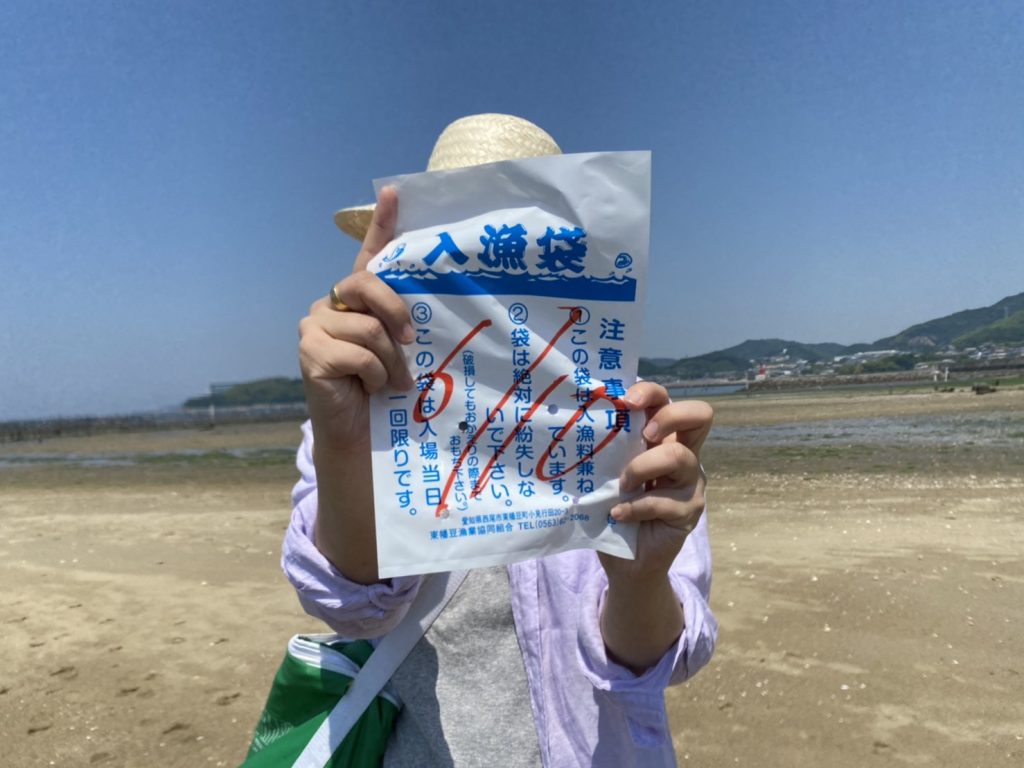
First, pay 1,200 yen (up to 2 kg) at the reception to get a fishing bag. (Be careful not to lose it!)
Low tide was around 12:30 on this day, so we arrived at the site at 10:00 am!
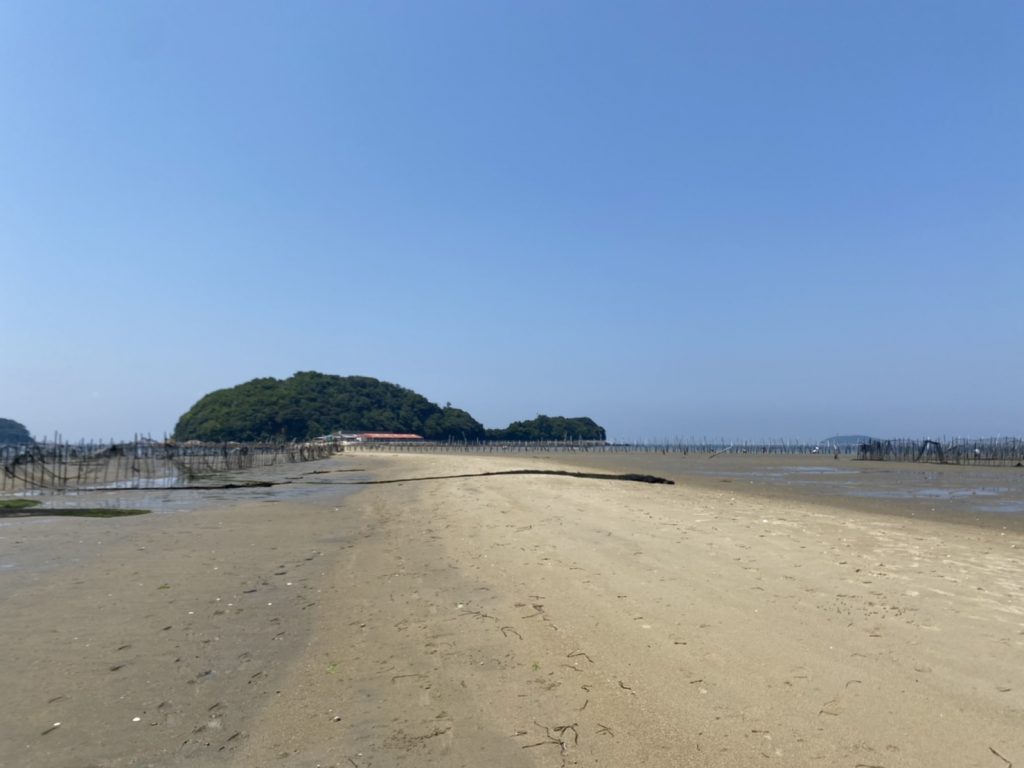
By the time we arrived, the tide was going out.
We would like to start digging.
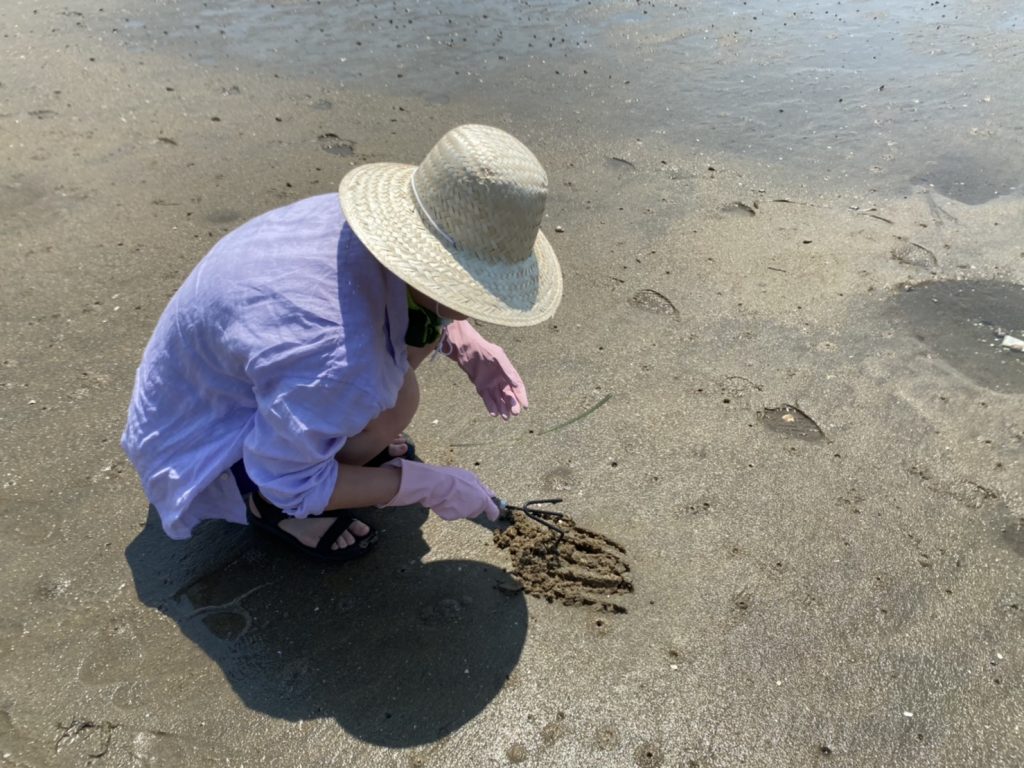
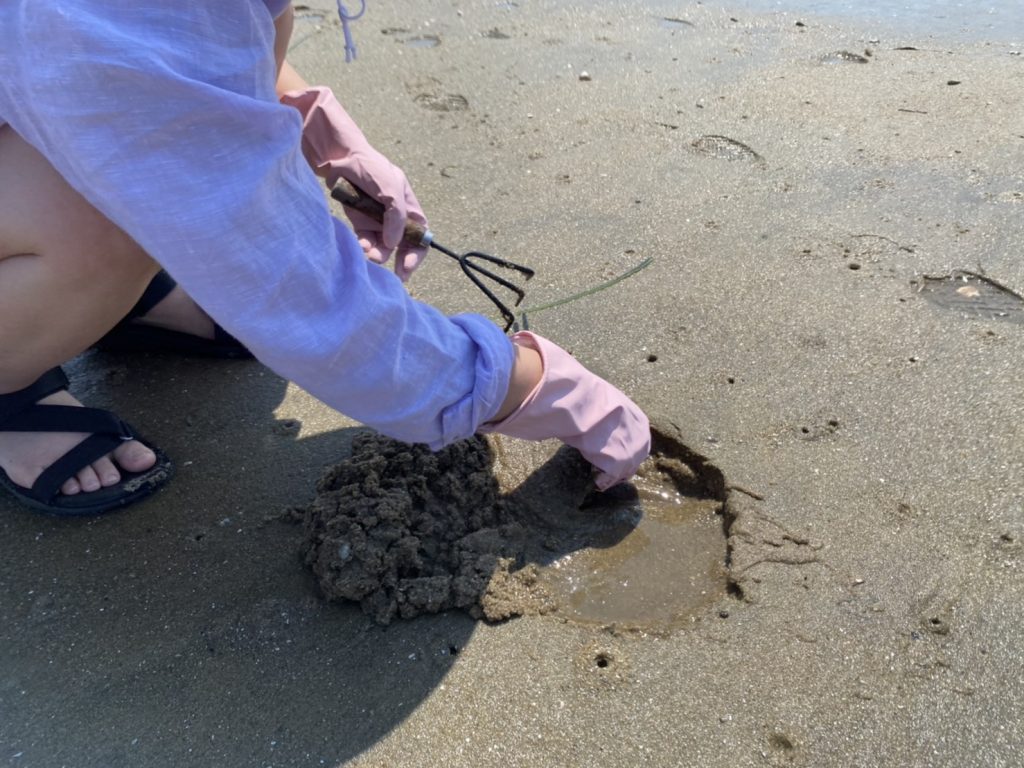
Since it was a weekday, it seemed almost as if the place had been rented out.
First, find the shell hole. If you find a hole, just dig it. If nothing comes out after digging 5 to 10 cm, it's a good idea to look for the next place.
Asari clams are often grouped together, so if you find several clams in a row, it's best to look around them.
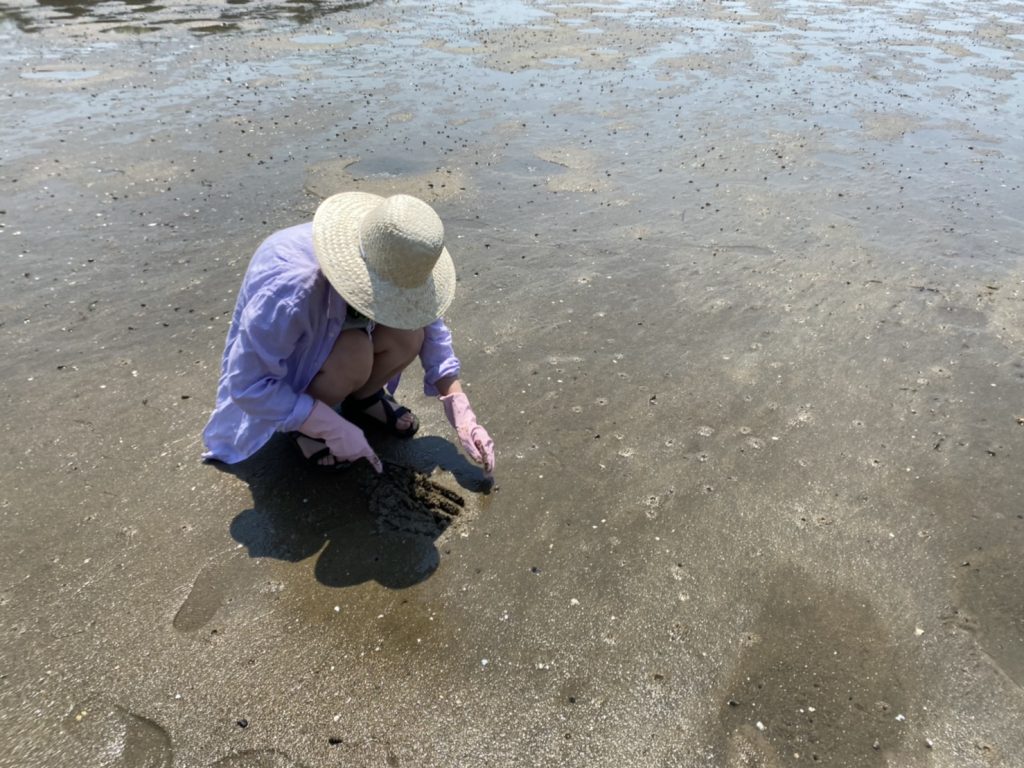
It's not getting done very well. We heard that in places where people dig a lot, it is sometimes picked over, so we decided to move a bit offshore.
Places where you can find a lot of clams are a bit hard and require a bit of strength to dig, so look for places where the sand seems to be hard while walking!
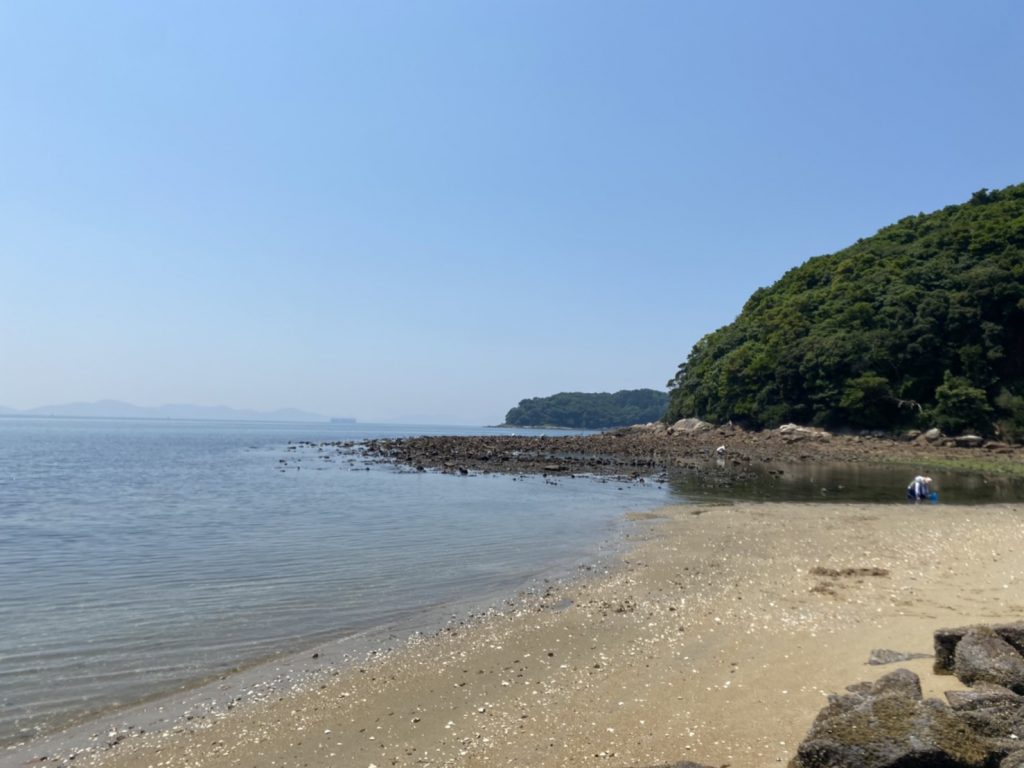
We found some good points!
By the way, it seems that there is a high possibility that there are clams in the shade of the rock.
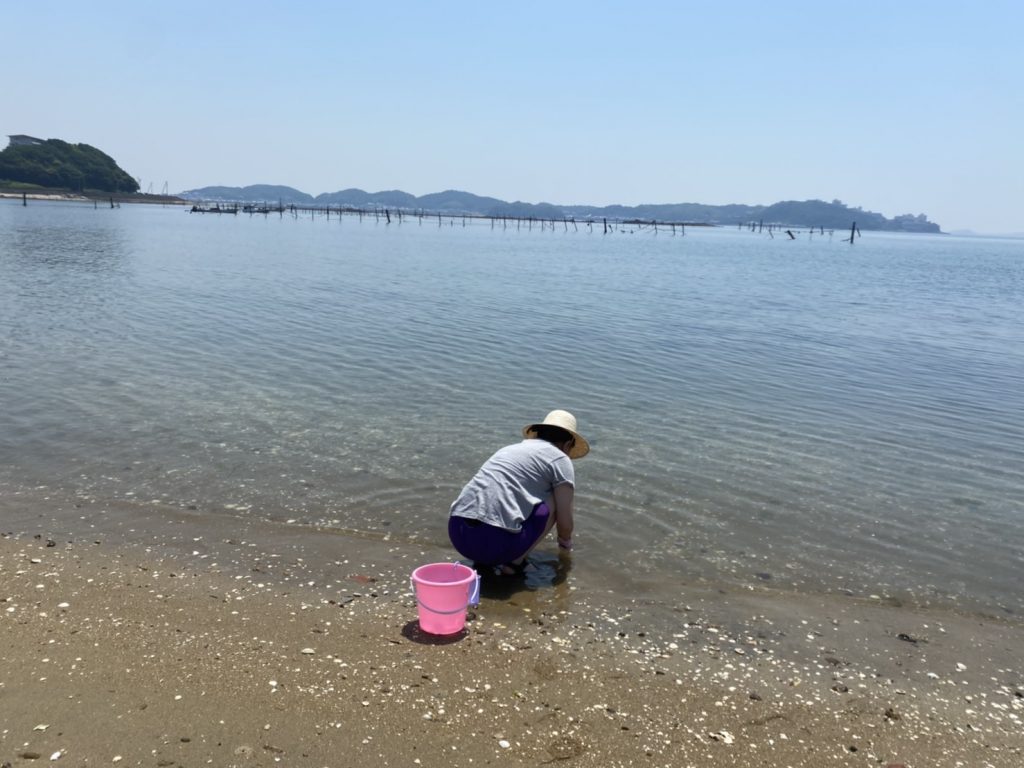
let's see. How about this time ~~~.
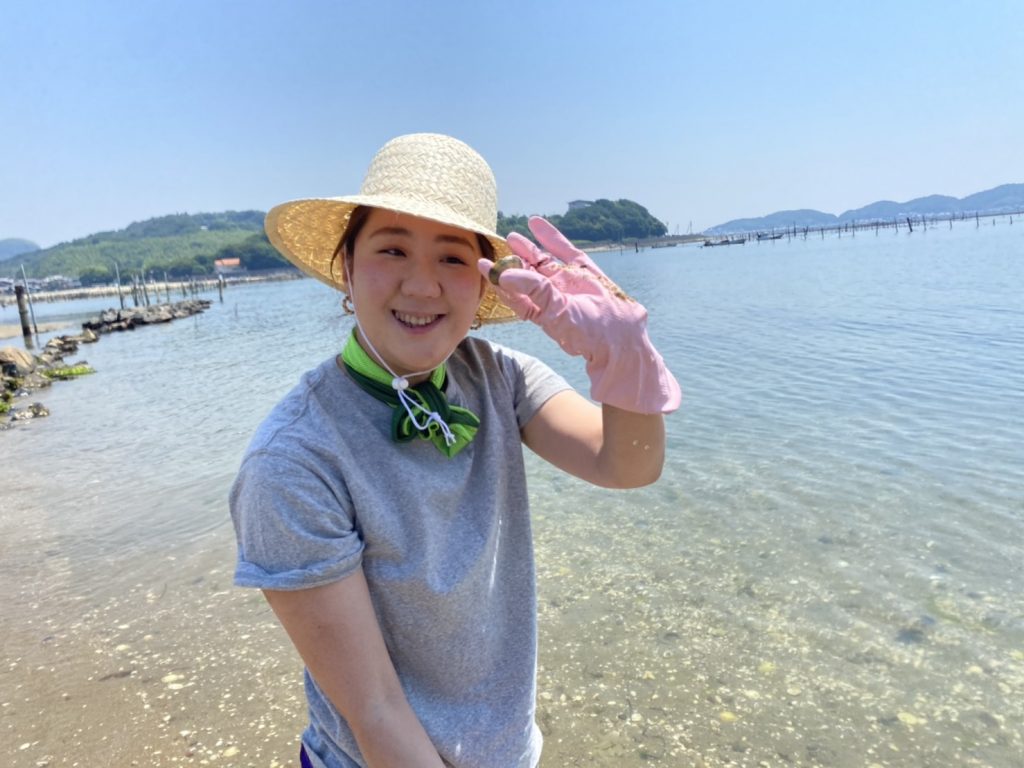
Yes!
I got a pretty big clam.
We found that if you pick at a water level just enough to soak your thighs, you have a high probability of getting clams.

Pretty good, isn't it!
Once you've caught clams, they'll be nearby, so once you find one, you'll be able to keep getting more.
By the way, it's hard to walk with the clams you've picked, so it's more comfortable if you put a float on the basket to keep them floating.

Here are the shells we collected over the course of about 4 hours!
We got quite a lot~~!
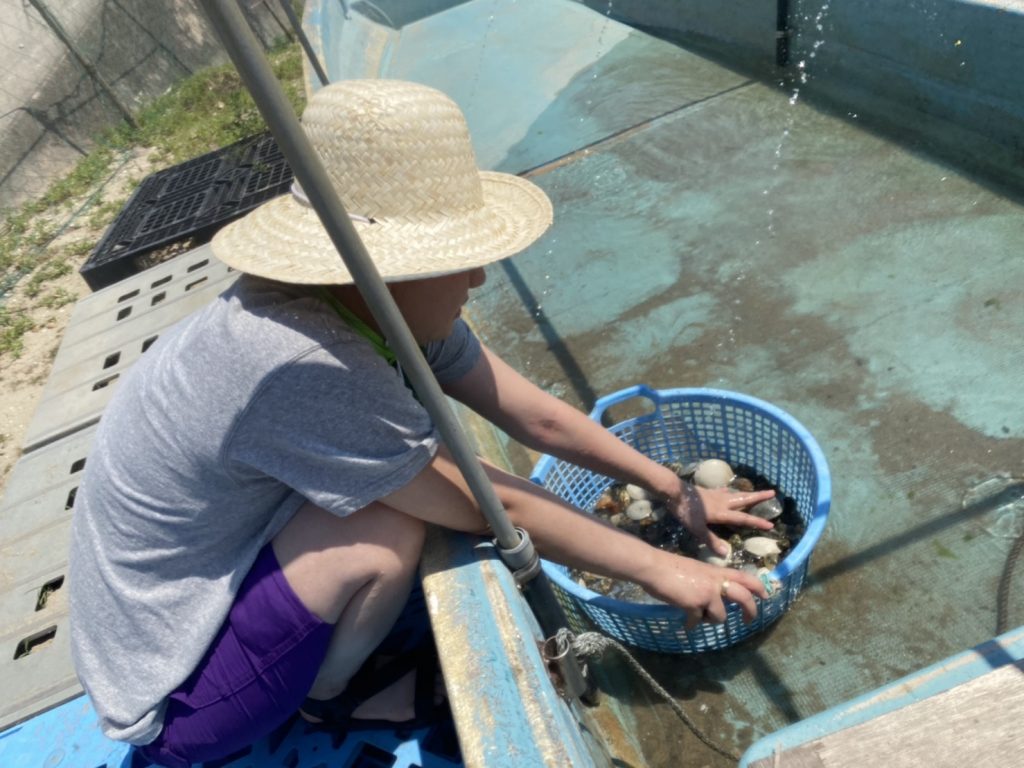
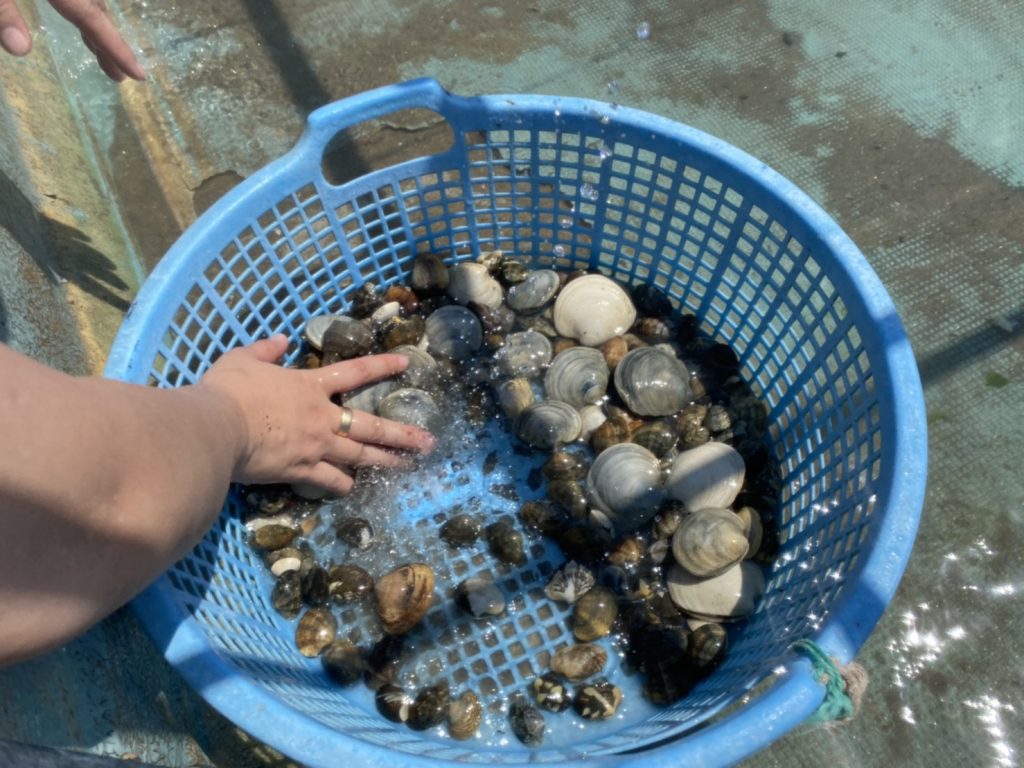
After getting the clams, wash well with fresh water, remove the sand, and tighten the shells.
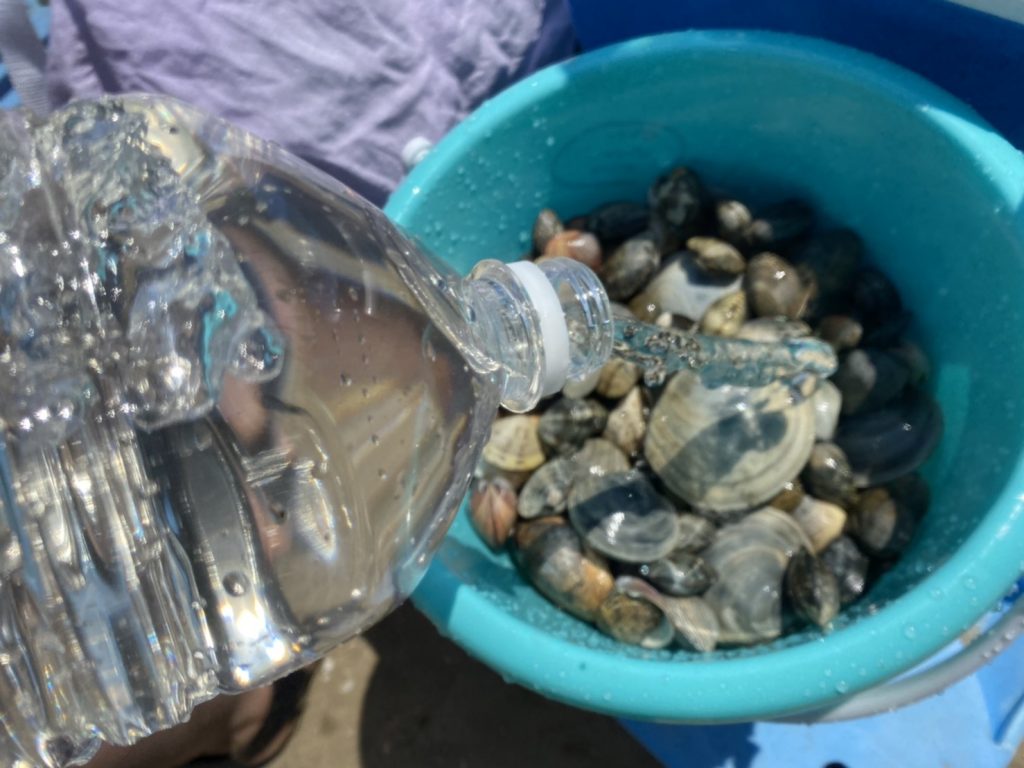
We finished by soaking them in the seawater we had brought from the beach!
My body was tired, but I was very satisfied.
Shellfish harvested this time
Asari clams
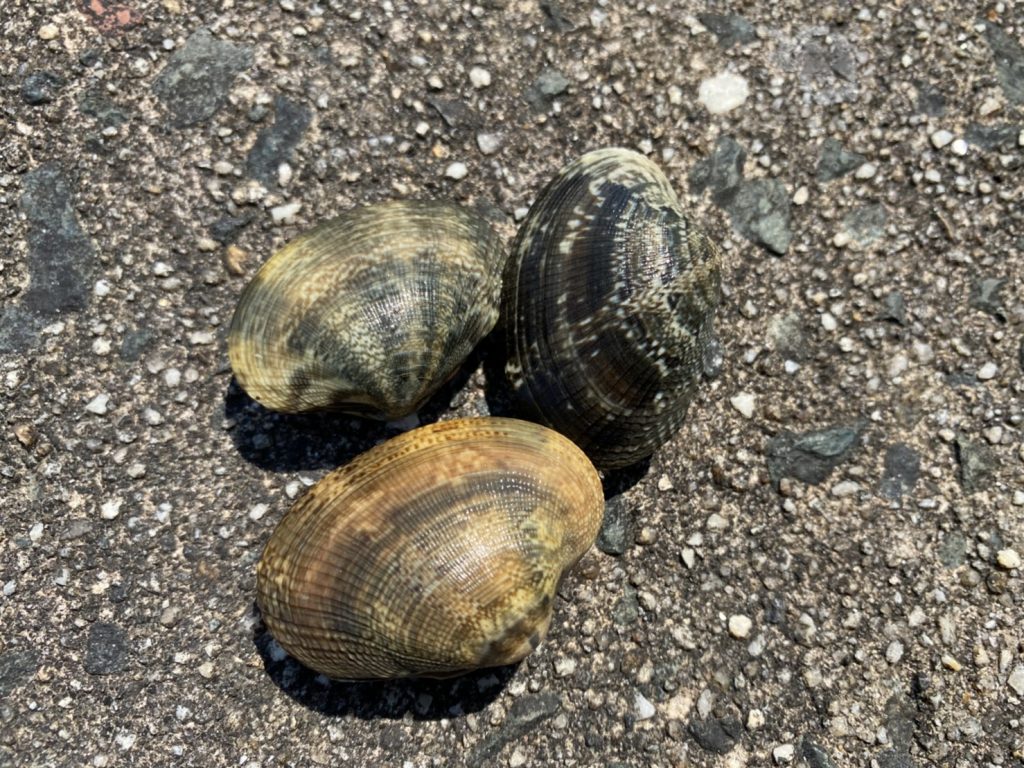
We harvested 5 types of shellfish this time. First of all, clams you're looking for!
The clams are large in size and packed with meat. In fact, we had miso soup, and it was excellent.
In addition, clams are very useful in various cooking methods.
Manjugai
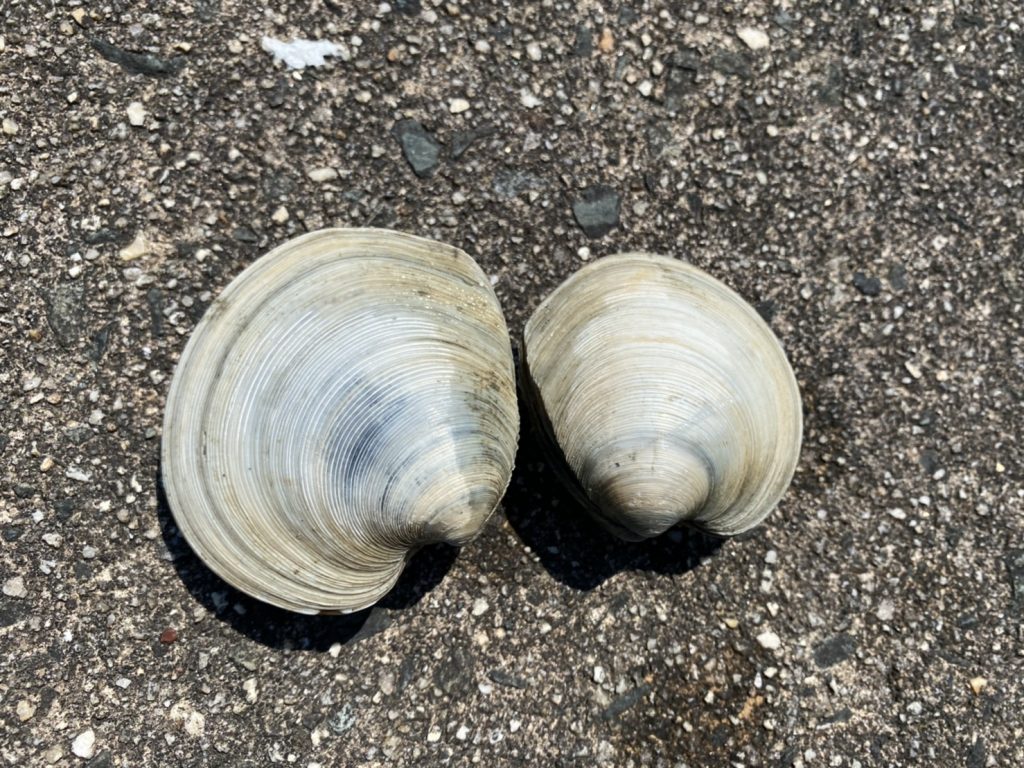
"Manjugai" is said to be the largest of the shellfish that can be caught by clam digging. On this day, we were able to catch them second to clams.
It is rarely seen in the market, and it is delicious even if it is grilled with butter, curry, steamed in sake, or clam chowder.
Shiofukigai
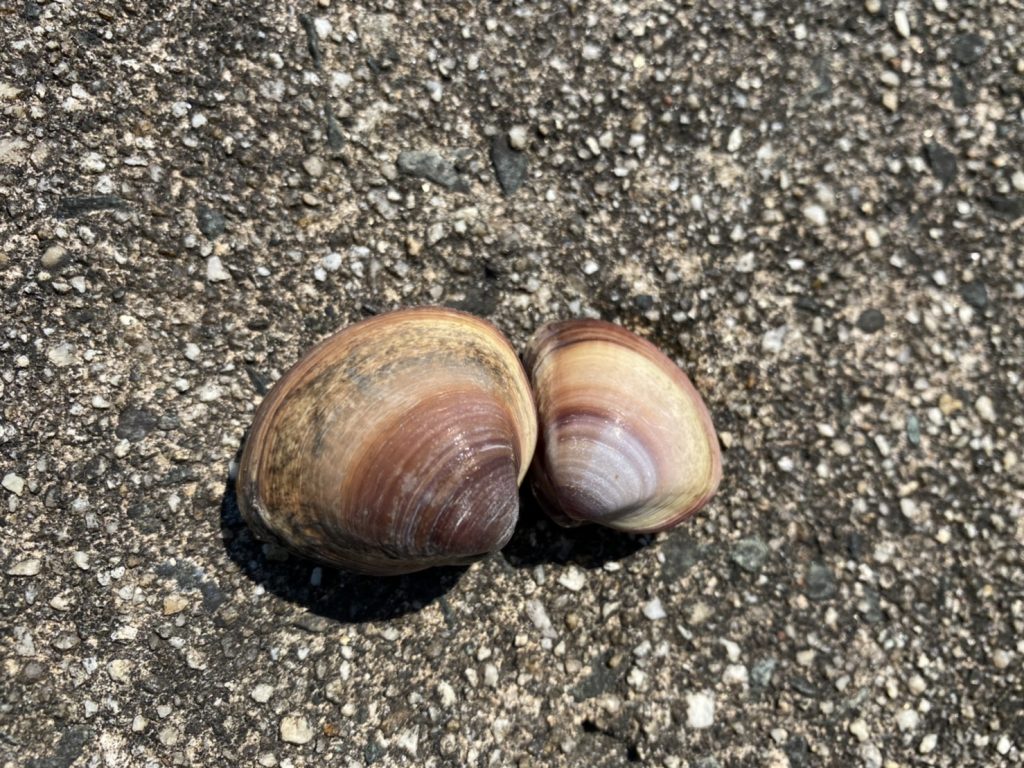
Shiofukigai, a kind of Bakagai. The size is about 3 to 5 cm, and the whole shape is plump and rounded.
It takes time to remove the sand, but the Shiofukigai produces a very good broth. Cooked rice, miso soup, steamed sake, and sashimi are also available.
Bakagai
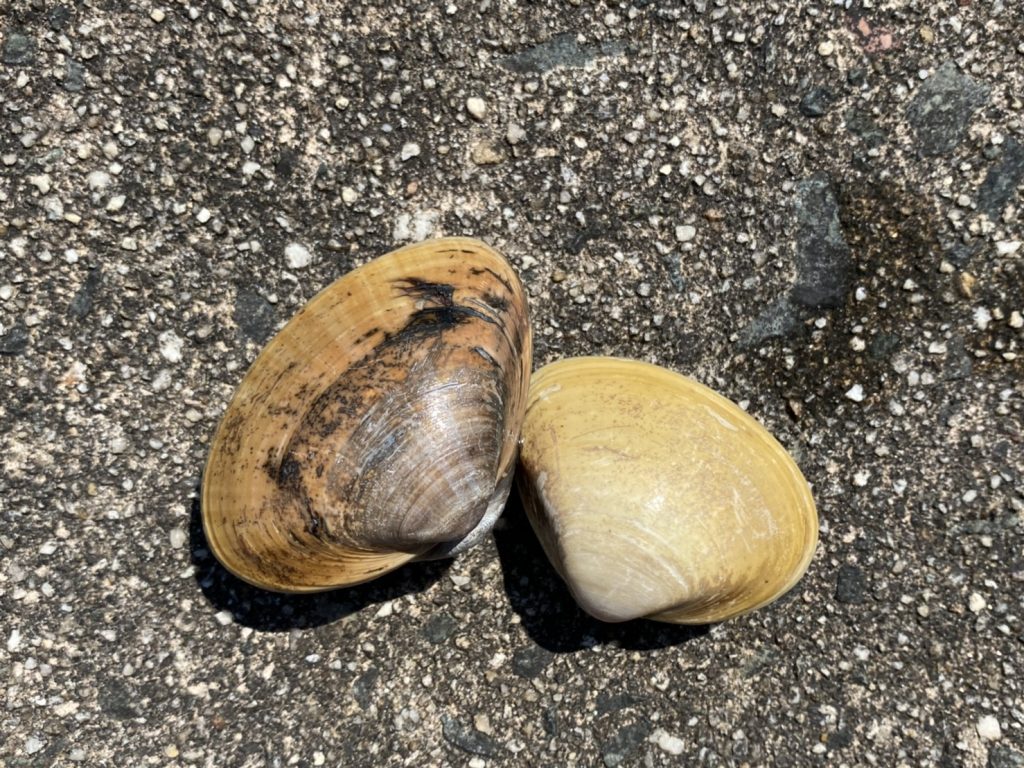
"Bakagai" is a very unfortunate naming. The shelled meat is called "Aoyagi", and the adductor muscle is called "Kobashira" or "Arare". It is an essential ingredient for Edo-style sushi and tempura, and is one of the luxury ingredients.
The shell is rounded, Hamaguri clam-shaped, thin and fragile. This is also a very delicious shellfish although it takes time to remove the sand.
Hamaguri clam
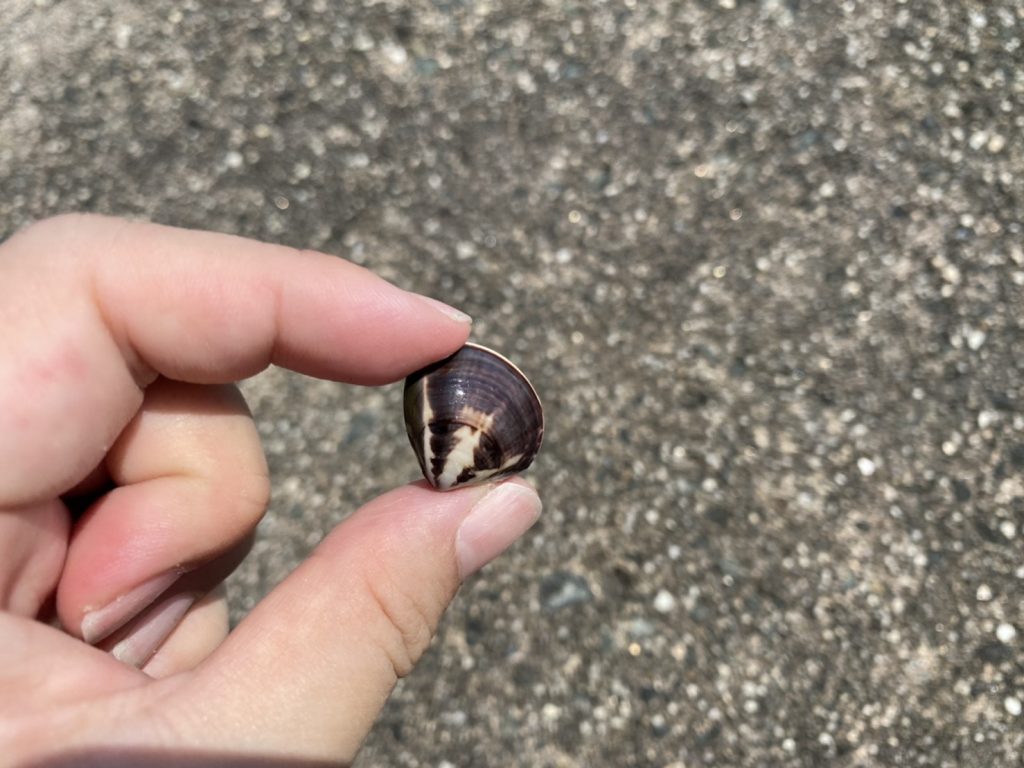
This time it ended with disappointing results. The last is "Hamaguri clam". It's not always possible to catch this shellfish, but when you do, you feel lucky.
Next time I would like to aim for Hamaguri clams.
▼ Click here for sand removal tips
https://www.gamagori.jp/special/activity/clamming
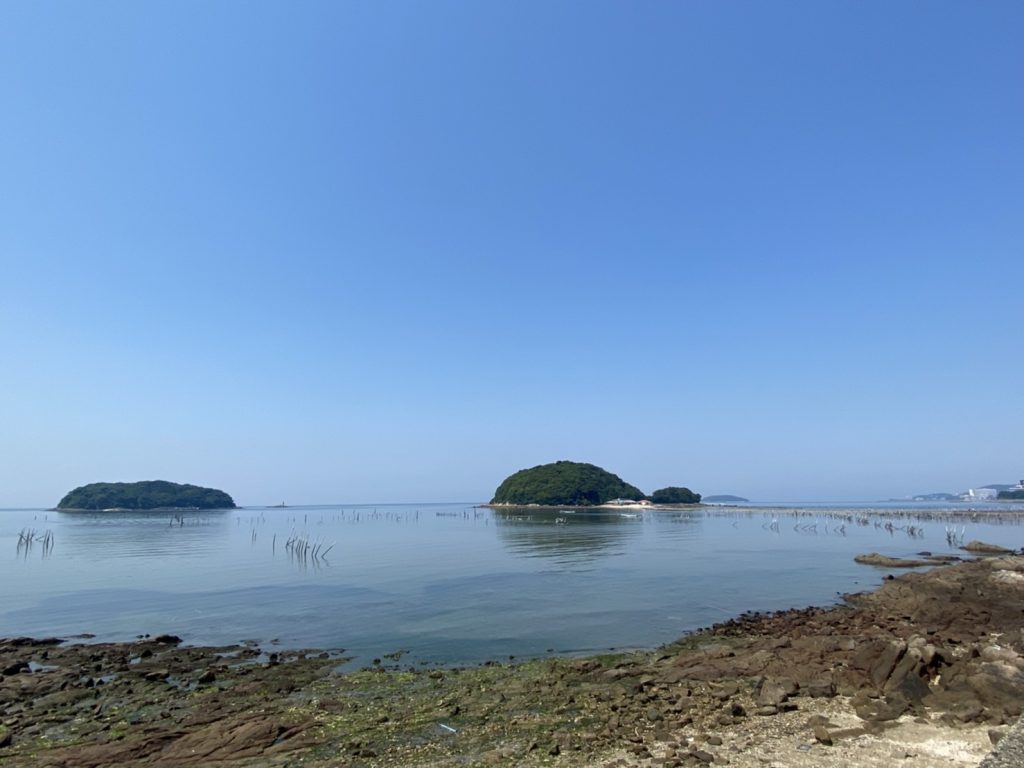
This time, we reported on the state of clam digging. If you haven't gone clam digging yet, please consider making your debut this year. Adults will be fascinated by the feeling of treasure hunting.
And above all, the taste of the shellfish you caught yourself is exceptional!


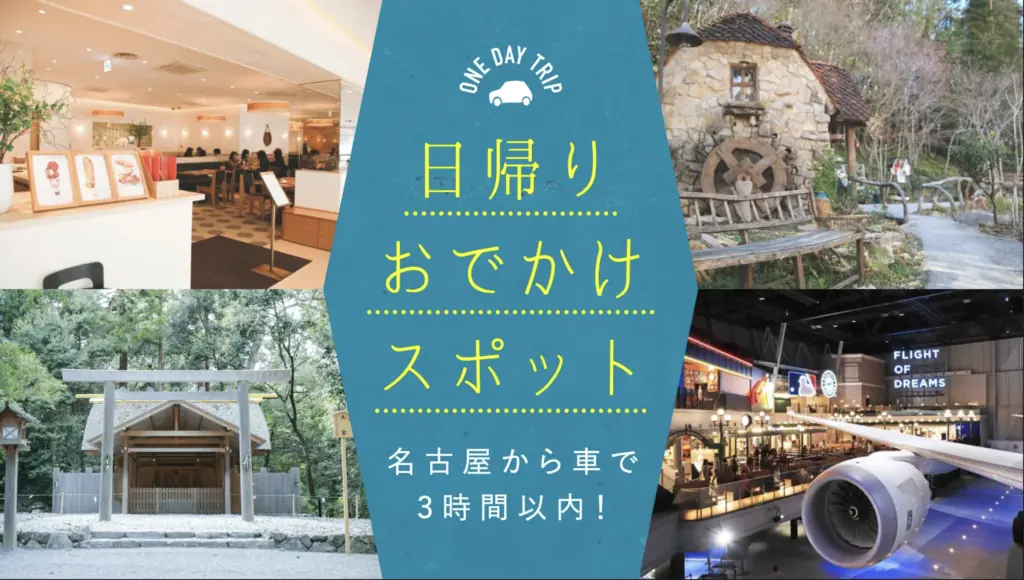
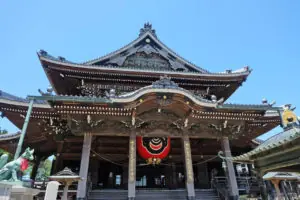

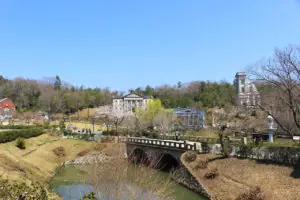
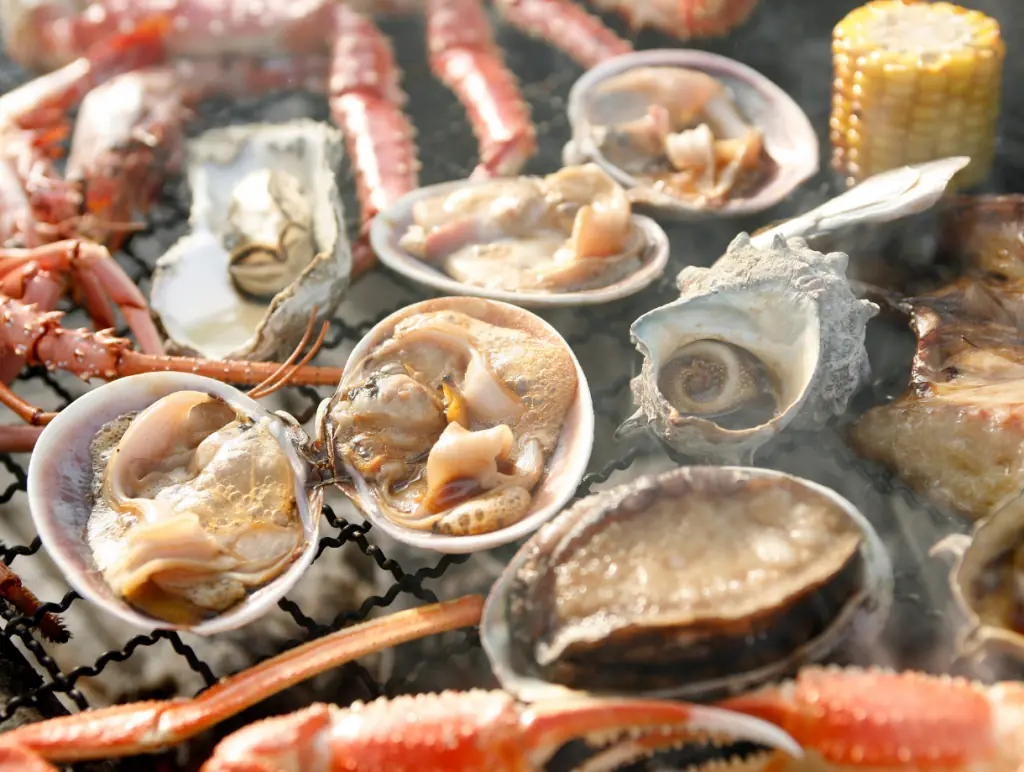
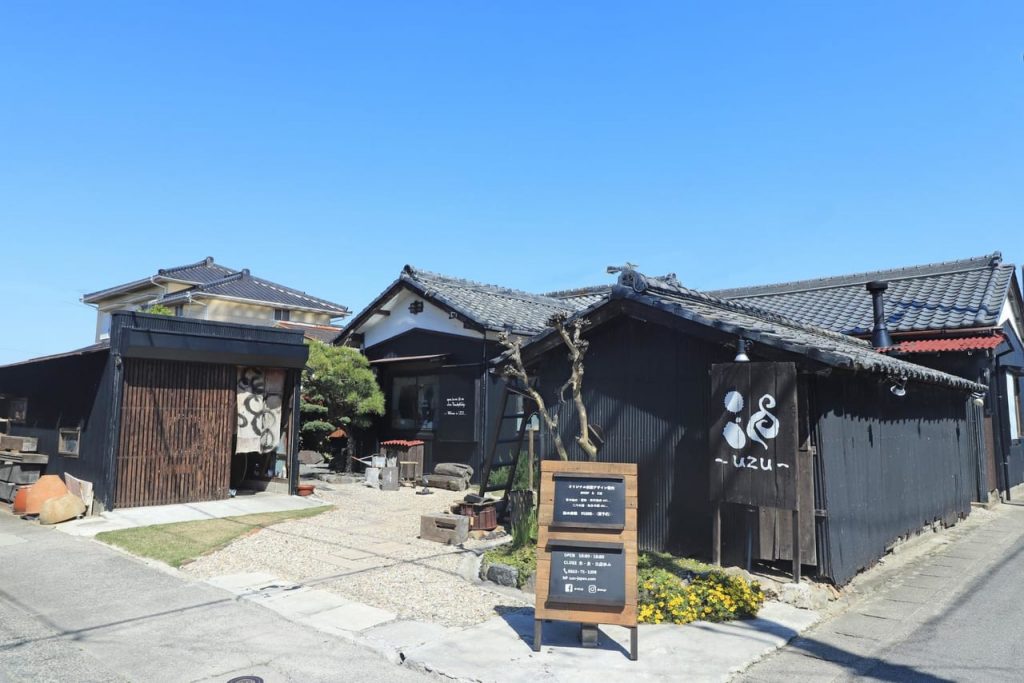
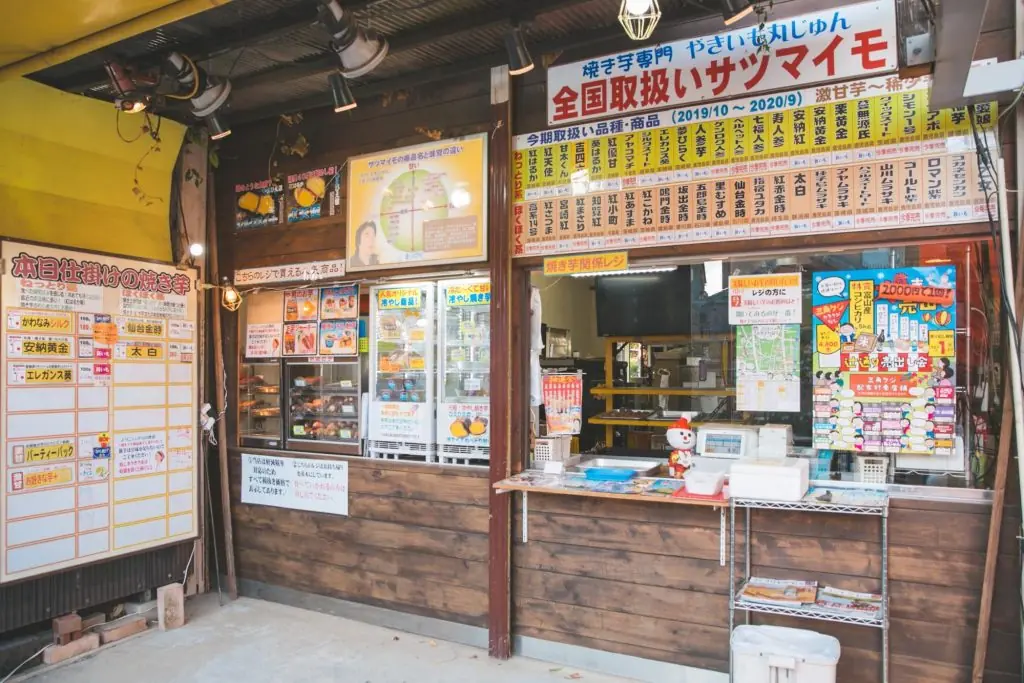
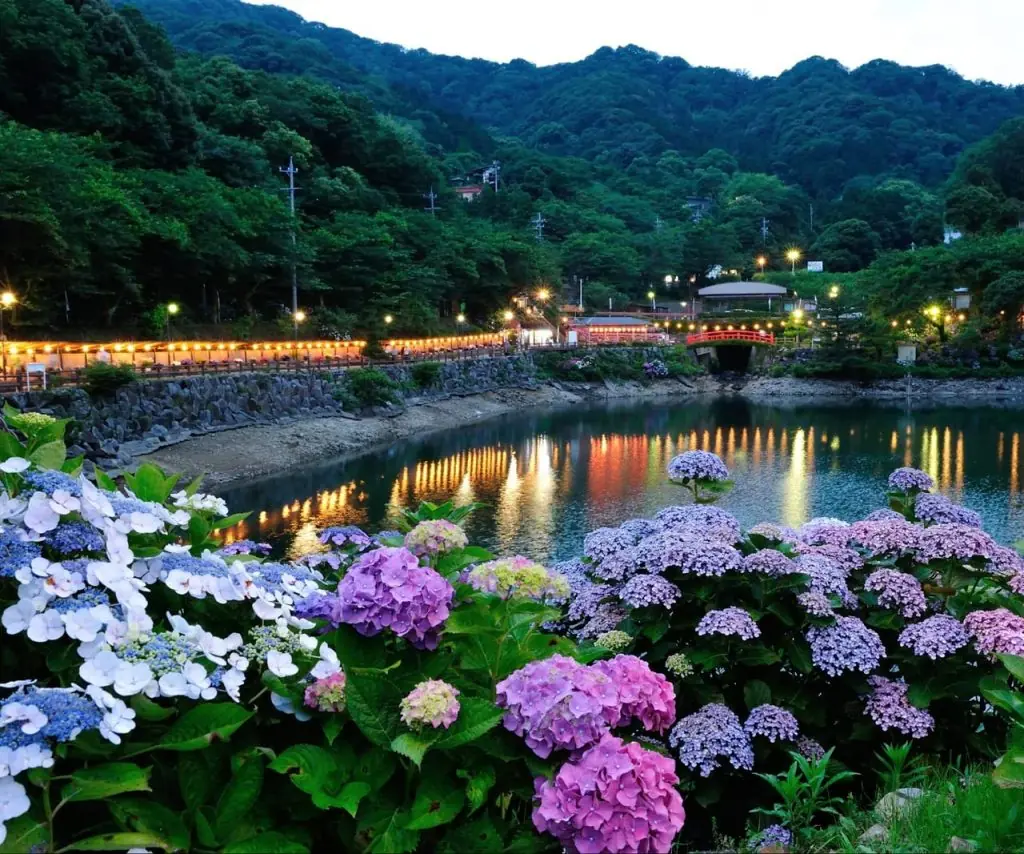
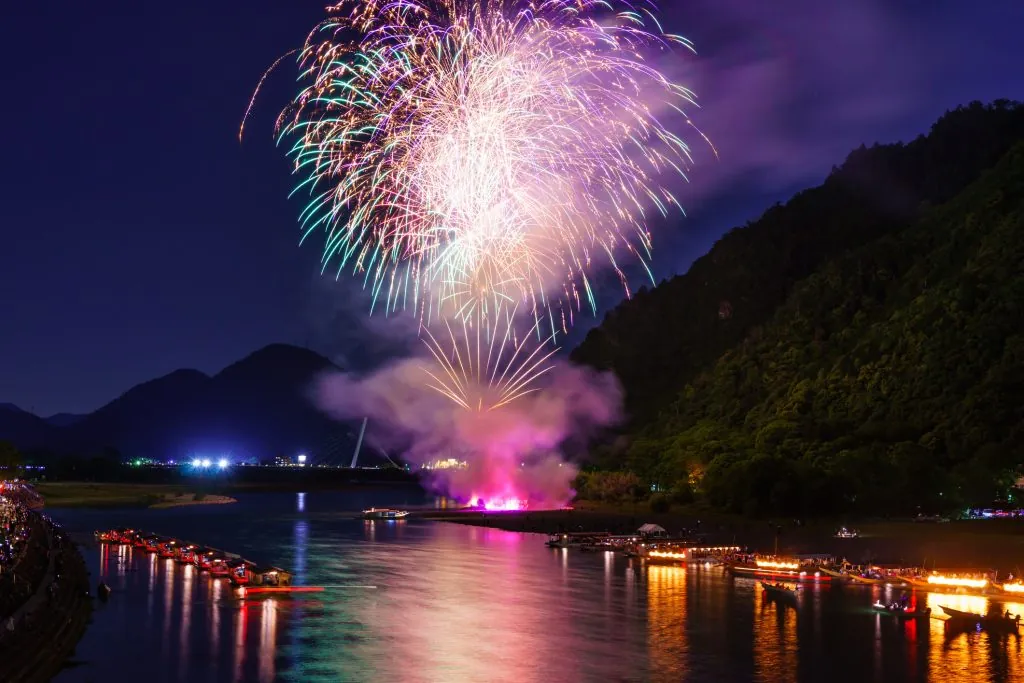
![[Indoor Facilities] Where to Go on Rainy Days in Tokai Area! For Family Outings!](https://life-designs.jp/wp/wp-content/uploads/2023/07/FotoJet-23-1024x768.jpg)
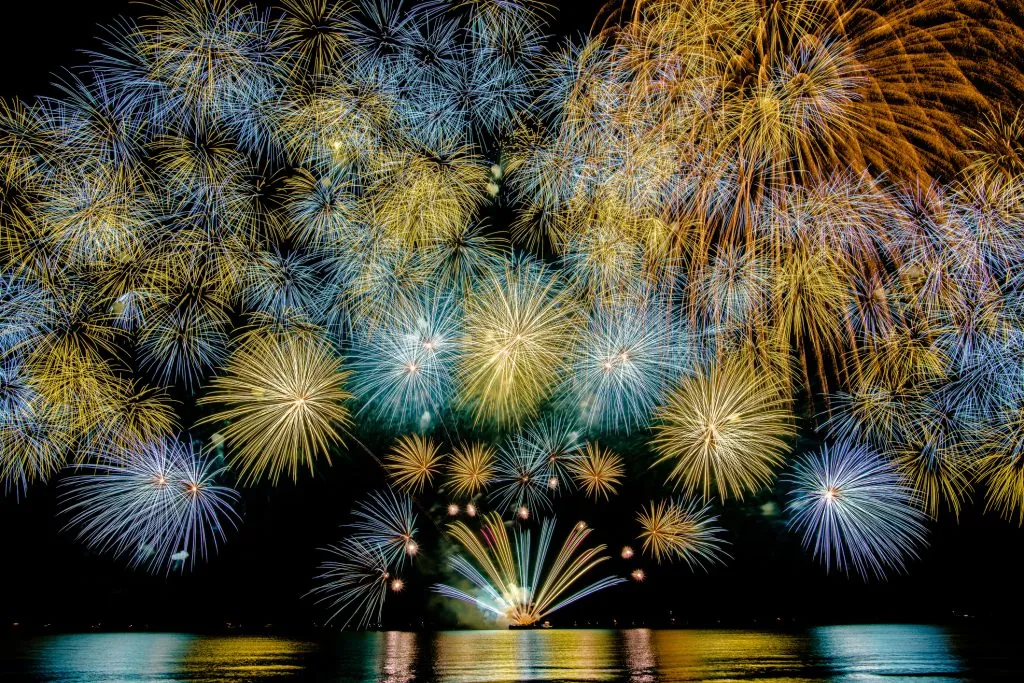
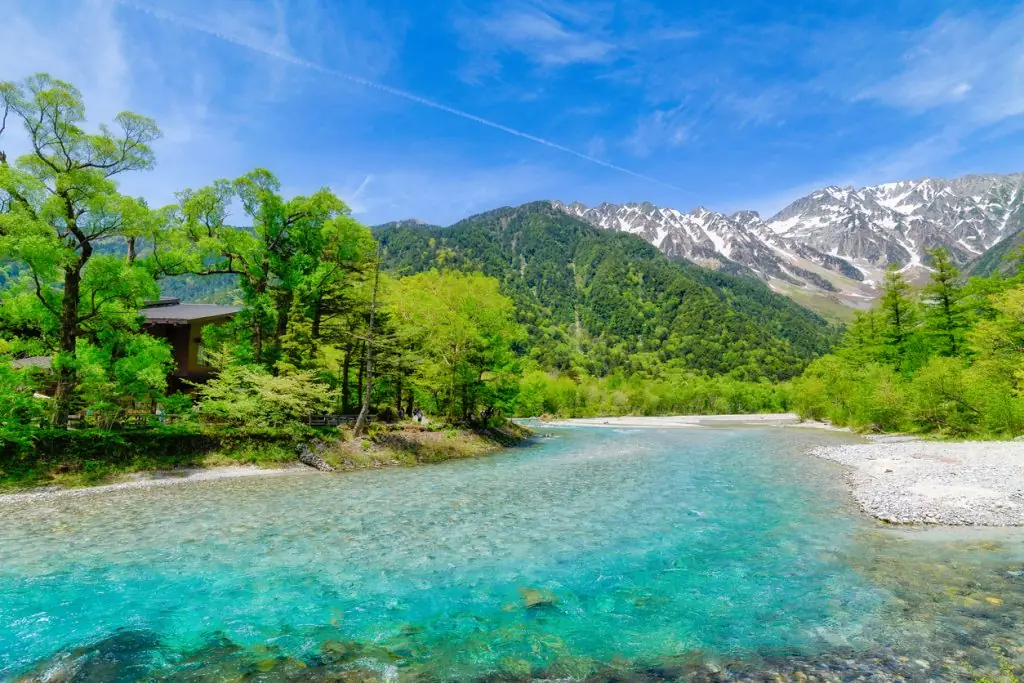
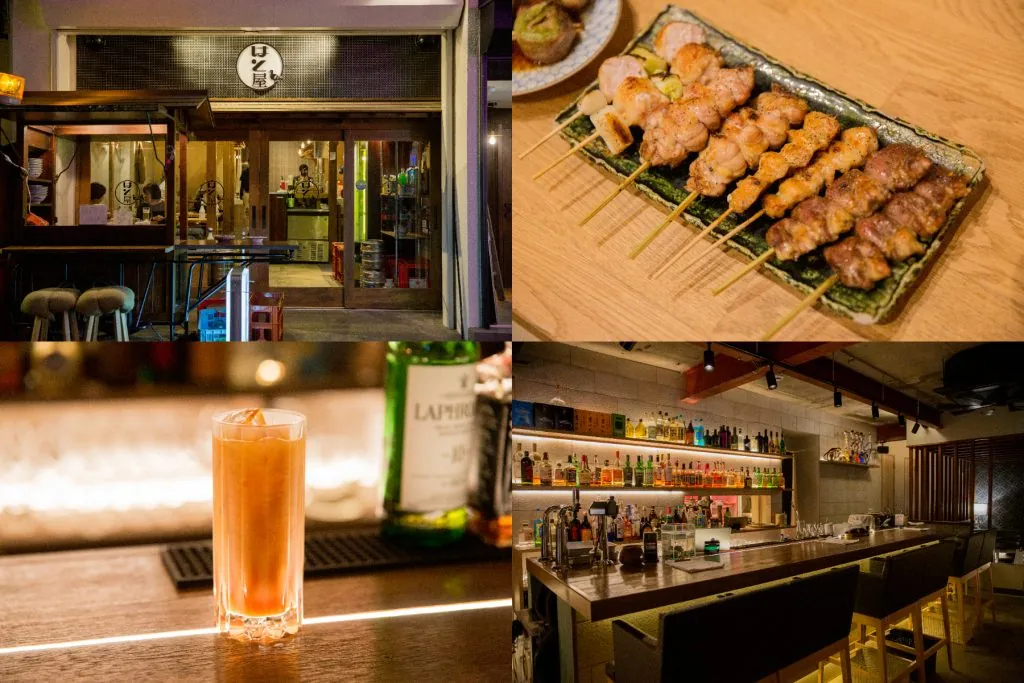
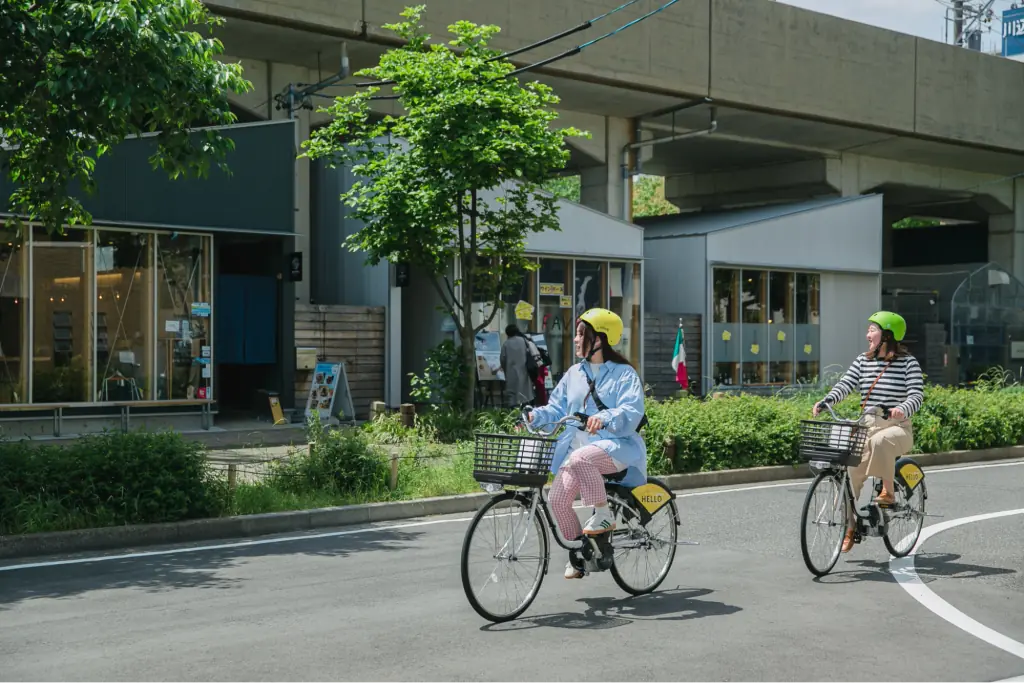
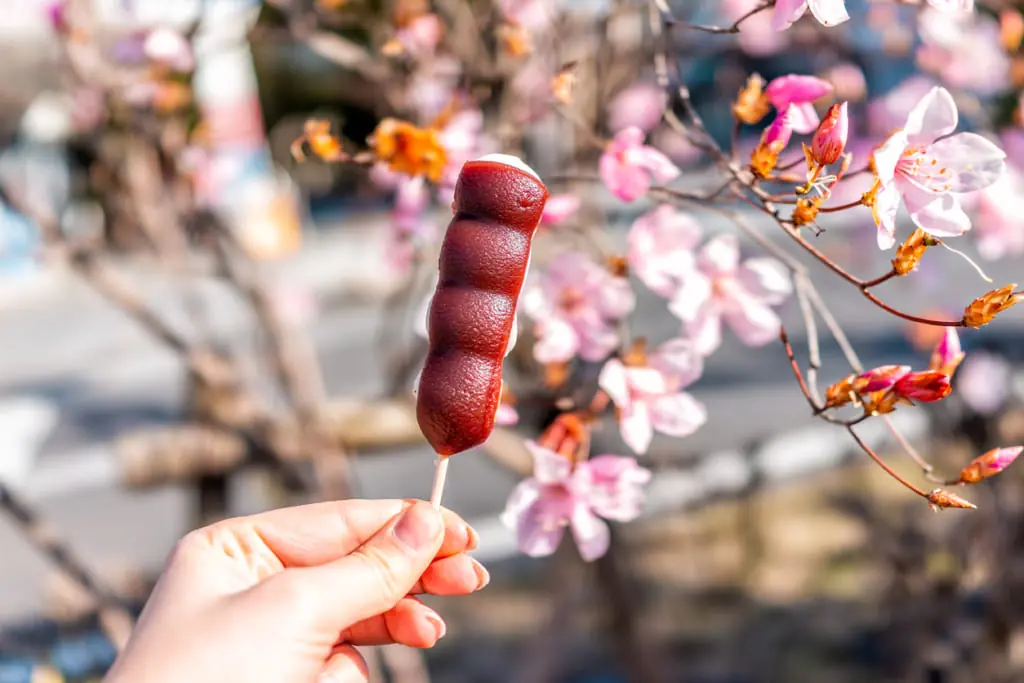
![[Indoor Facilities] Where to Go on Rainy Days in Tokai Area! For Family Outings!](https://life-designs.jp/wp/wp-content/uploads/2023/07/FotoJet-23.jpg)
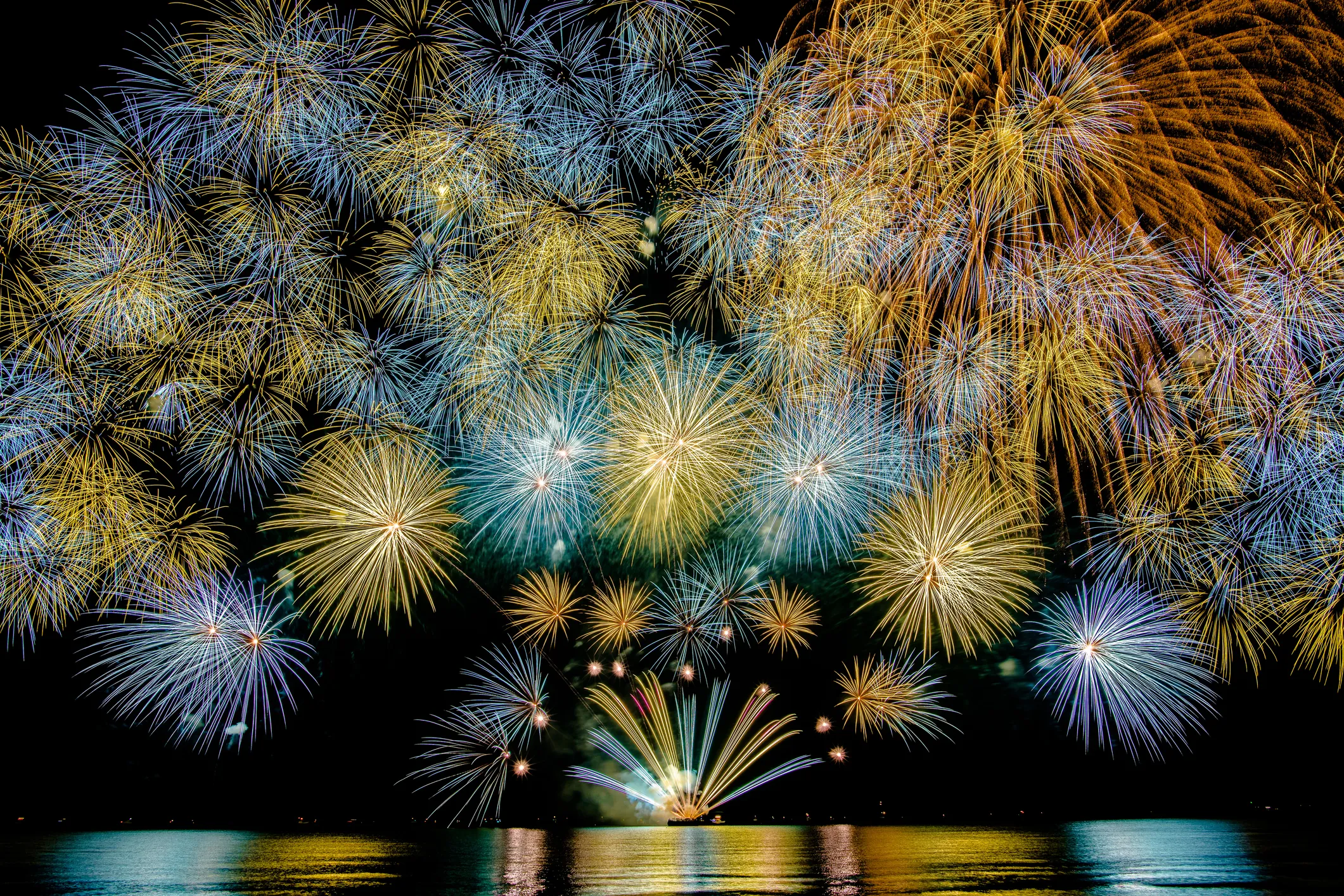
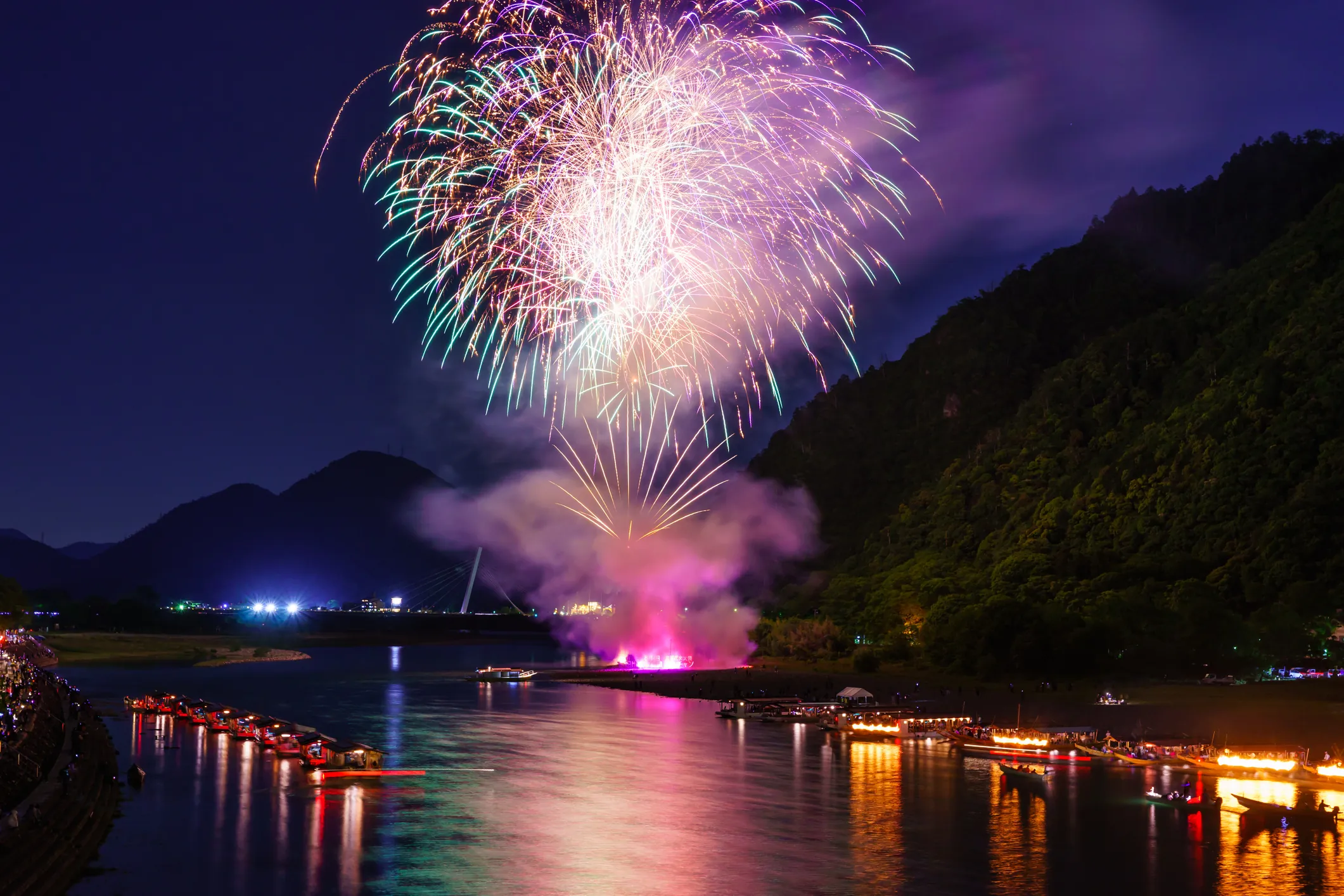

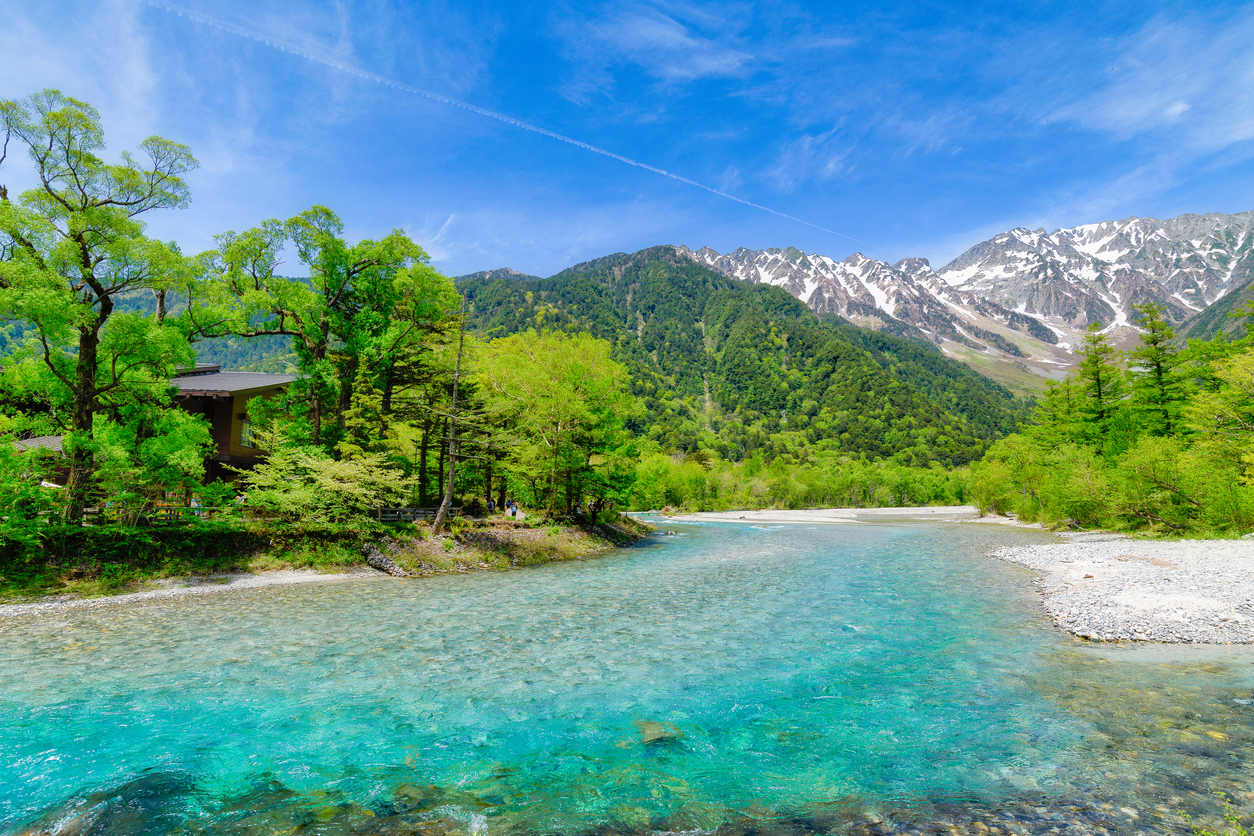
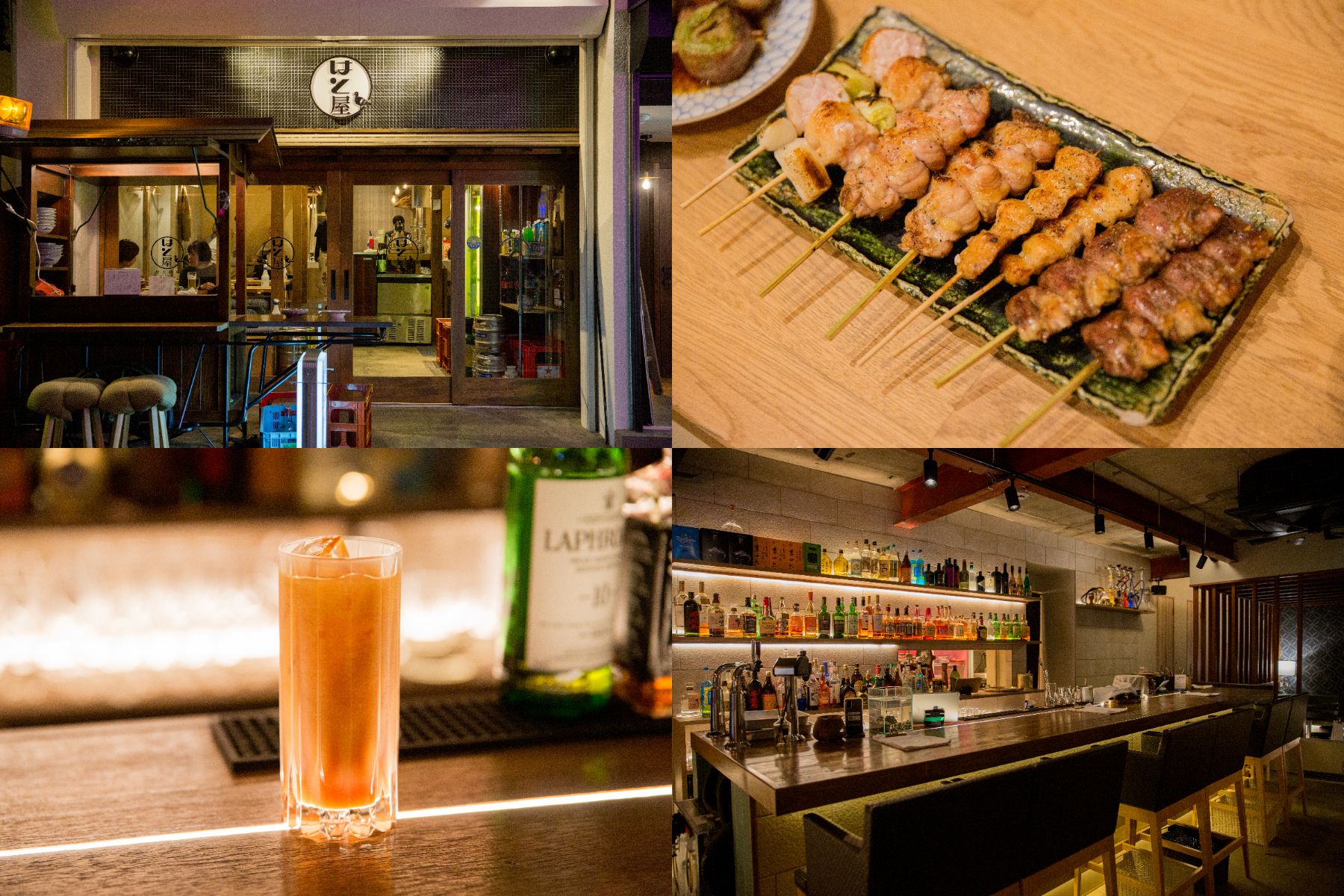
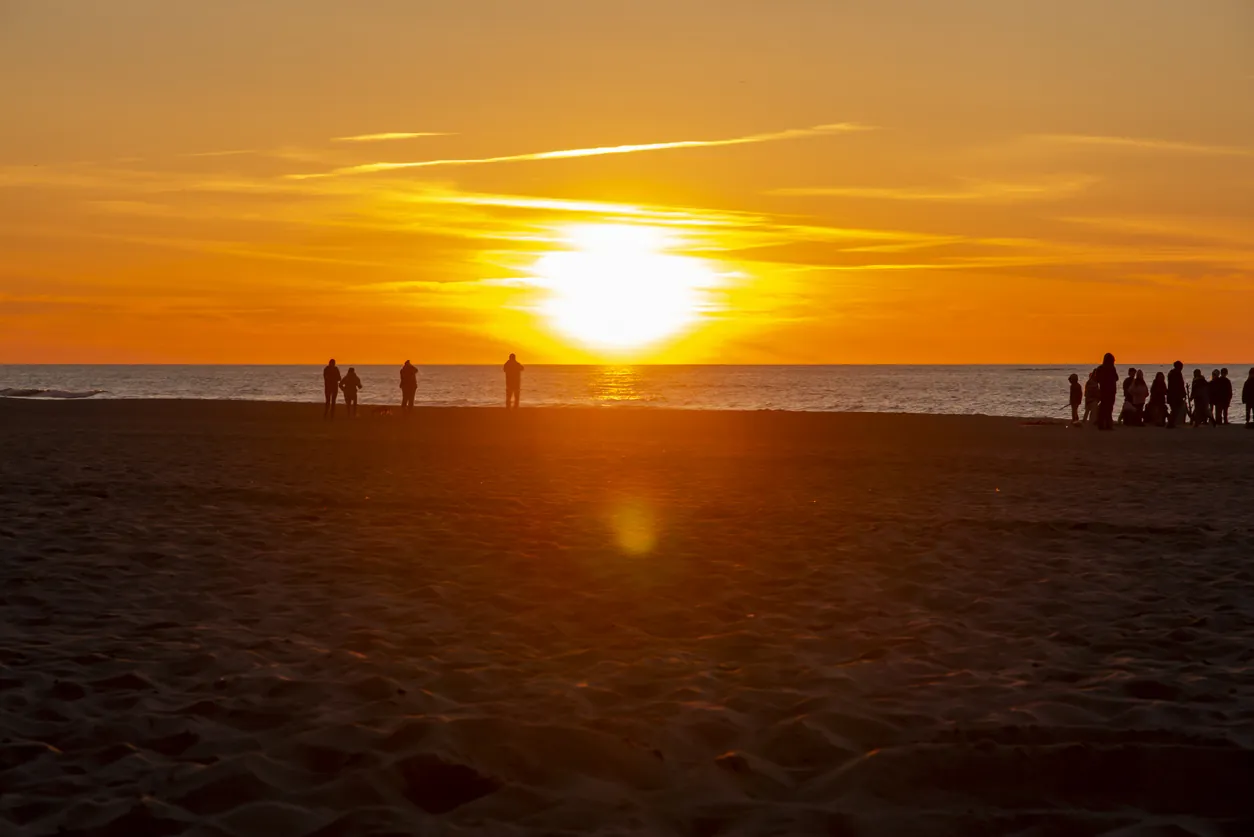
![[Enjoy Kuwana! ] From Classic to the Latest Spots](https://life-designs.jp/wp/wp-content/uploads/2022/11/Kuwana_w1920x1088-1-768x435.png)
![[Tokai Area] Scenic Spots which You'll Never Forget](https://life-designs.jp/wp/wp-content/uploads/2019/12/LD_banner_w1920x1088_prospect-1-768x435.jpg)
![[Ghibli Park] Beginner's Guide](https://life-designs.jp/wp/wp-content/uploads/2023/07/ghiblipark_w1920h1088_20240422-1024x580.png)
![[Nagoya City] Exploring Coffee Shops](https://life-designs.jp/wp/wp-content/uploads/2022/03/84215d942d0289eb17e3745432836bf4-1024x580.png)
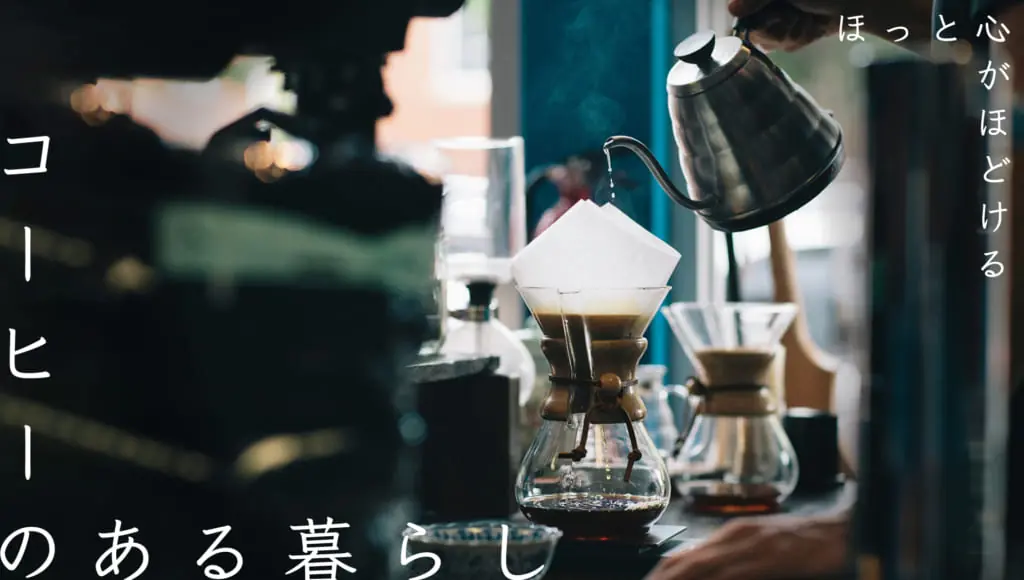
![[Special Feature] Enjoy Your Day at a Park!](https://life-designs.jp/wp/wp-content/uploads/2019/12/LD_banner_w1920x1088_park-1-1024x580.jpg)



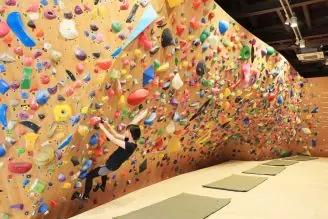
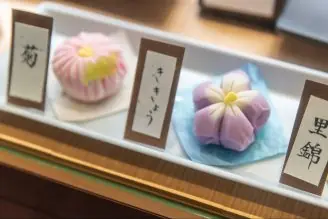
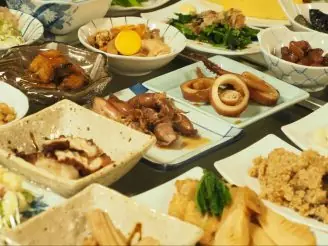
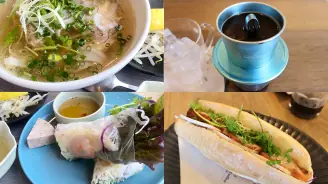

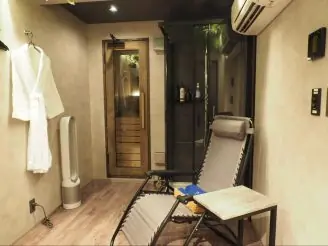
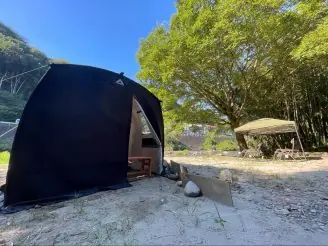


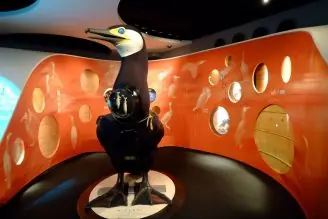
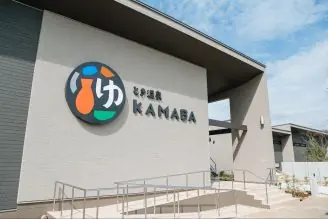
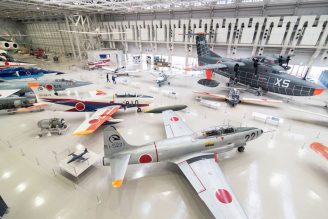
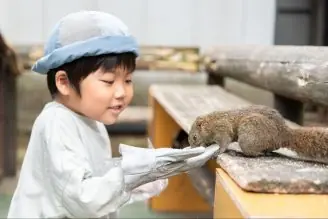
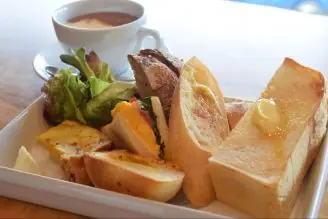
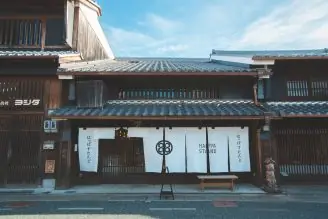
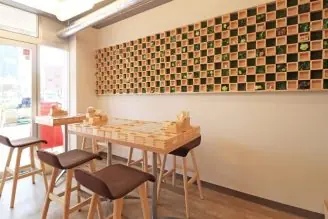
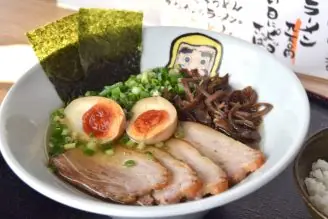
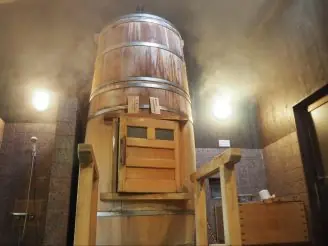
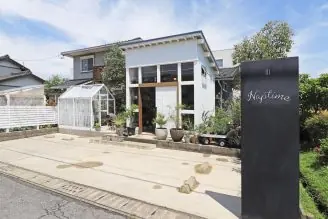

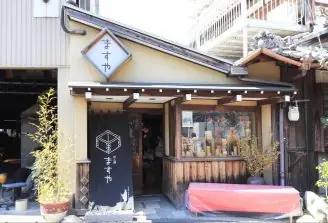
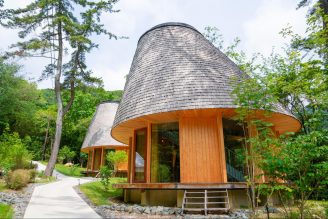
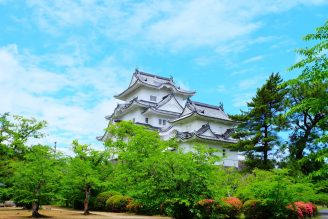

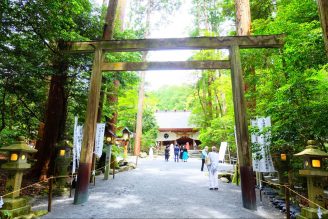

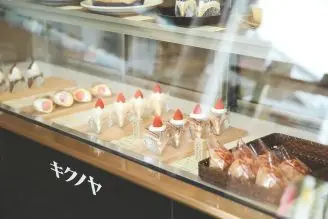

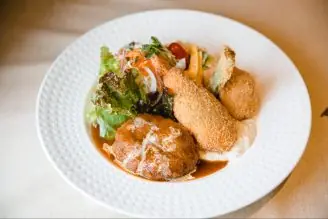


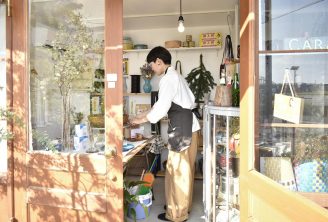
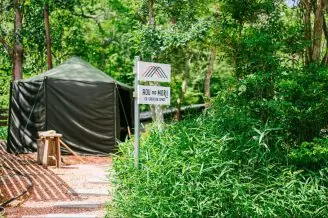
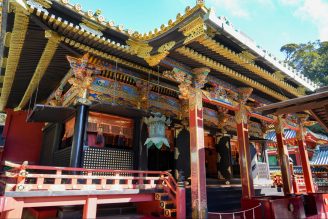
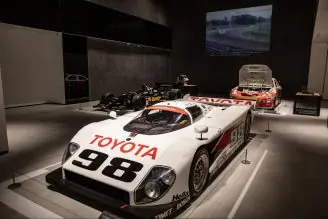
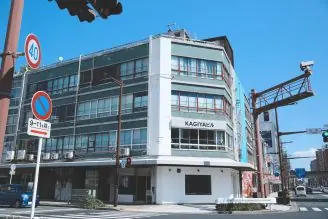
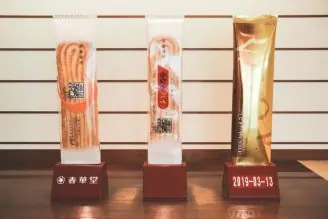
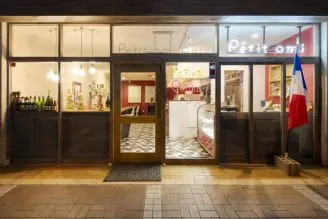
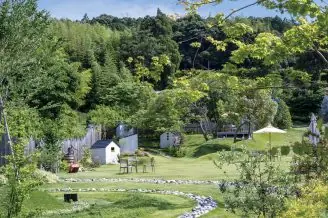


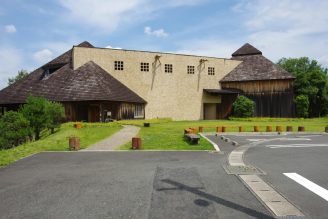
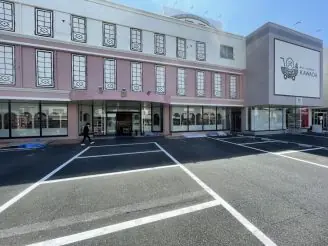
![[28 selections] I want to get it when I go to Ghibli Park! Recommended goods & souvenirs (Ghibli’s Grand Warehouse edition)](https://life-designs.jp/wp/wp-content/uploads/2023/07/07bb34f30842ccc4c6412fc060e1966c-1024x683.jpg)
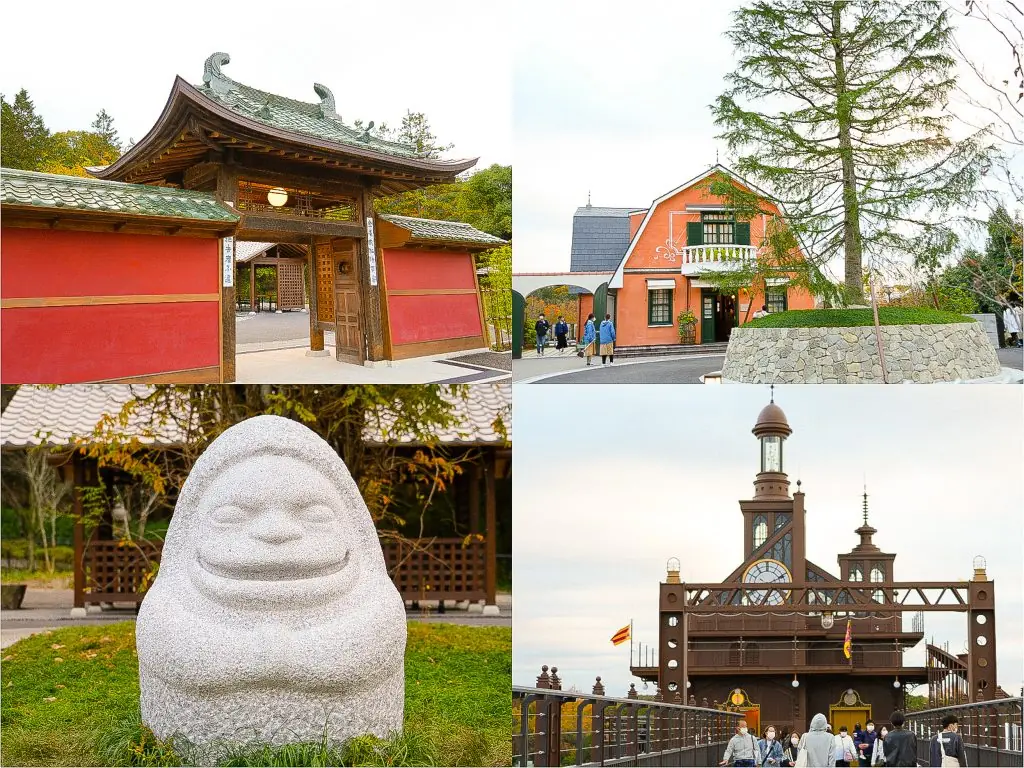
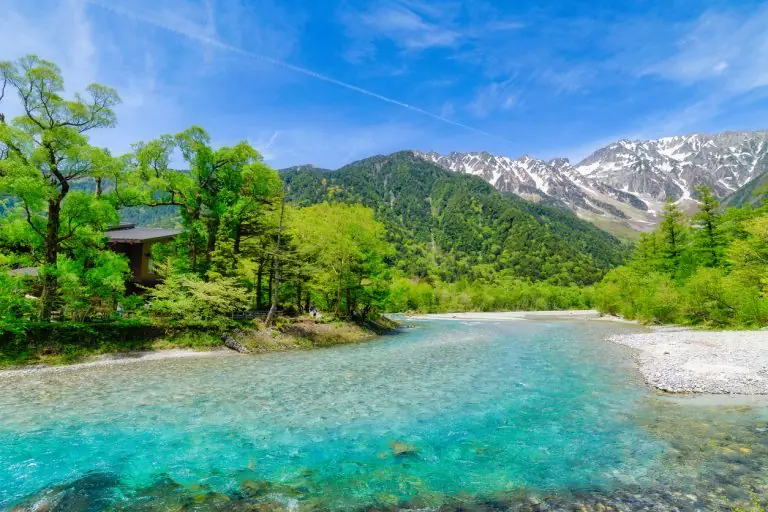
![[Within 2hrs by Car] 12 Outing Areas where You can Go on a Day Trip from Nagoya!](https://life-designs.jp/wp/wp-content/uploads/2023/07/odekake12_w1200h900_20240422-328x246.png)

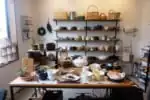
![[14 Selections] Recommended spots to spend the weekend in Kakuozan area of Nagoya](https://life-designs.jp/wp/wp-content/uploads/2022/07/Kakuozan-spot_w1920h1088_240605-328x186.png)
